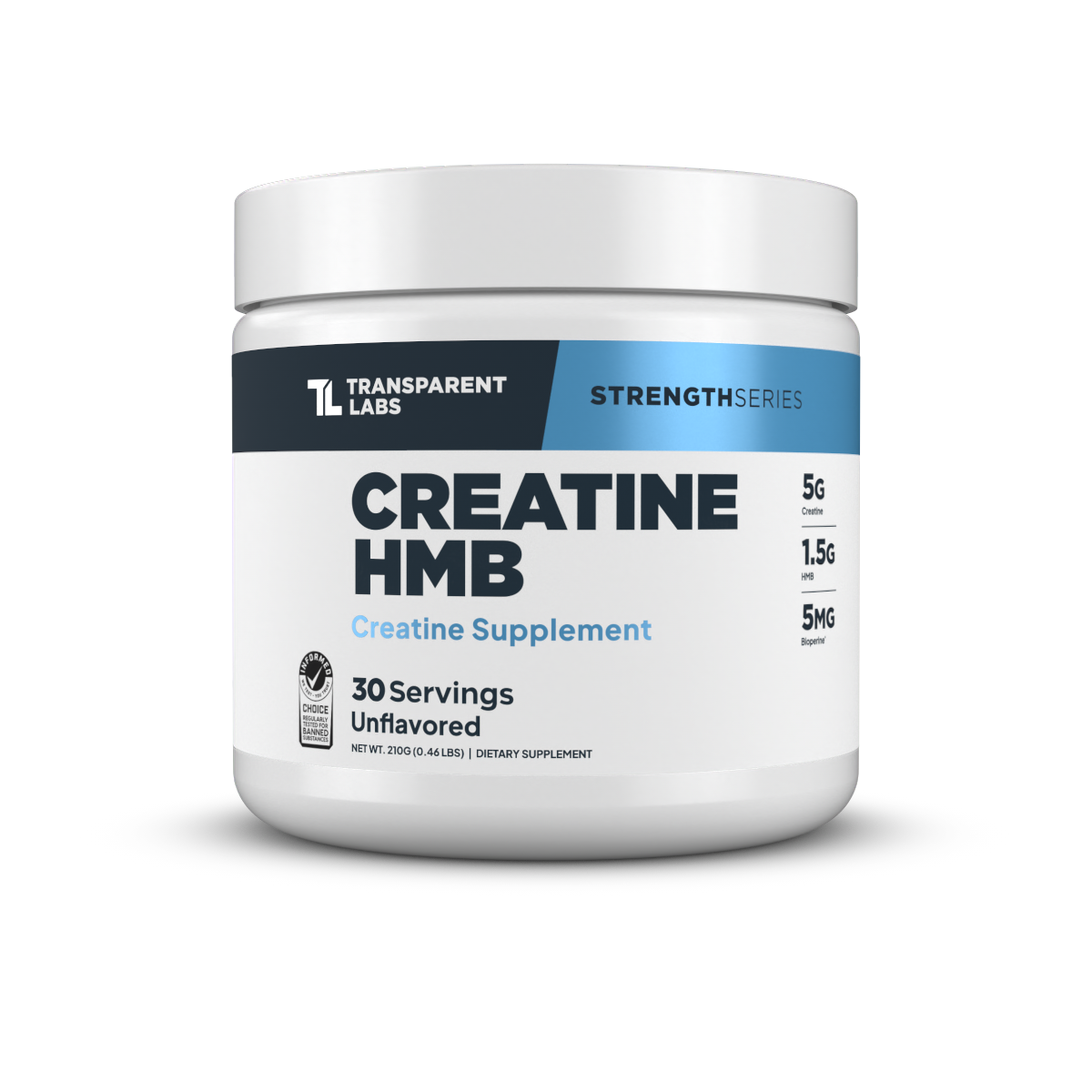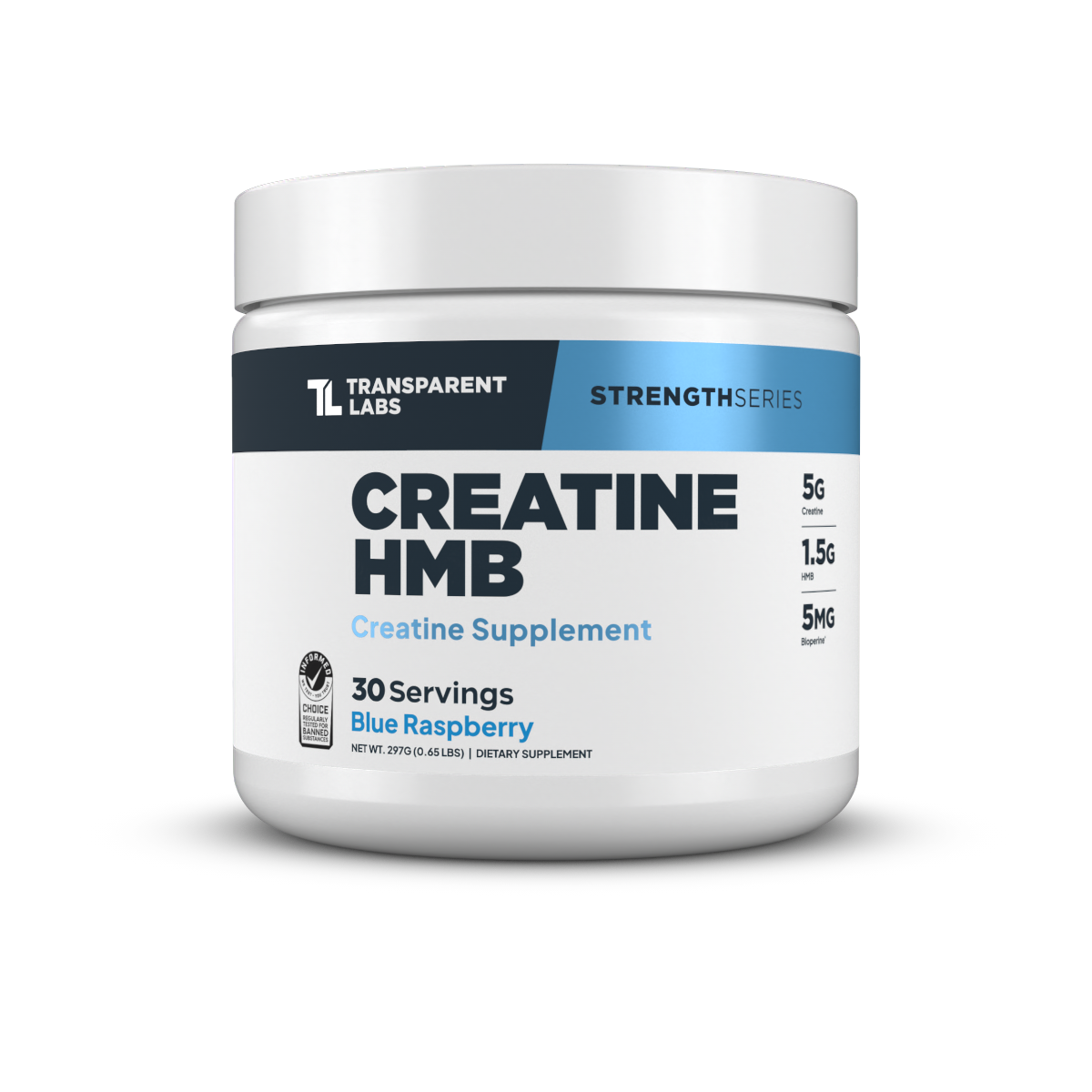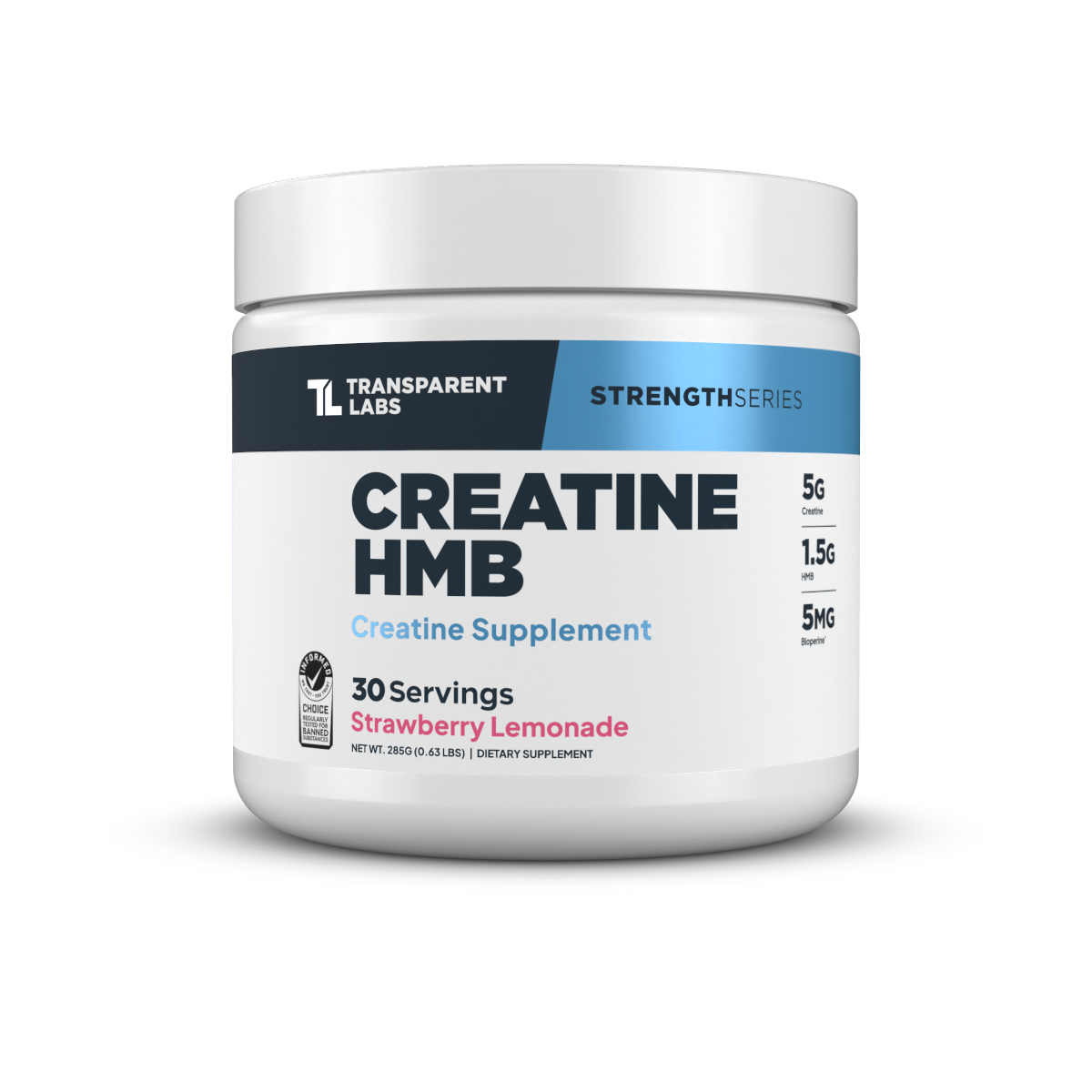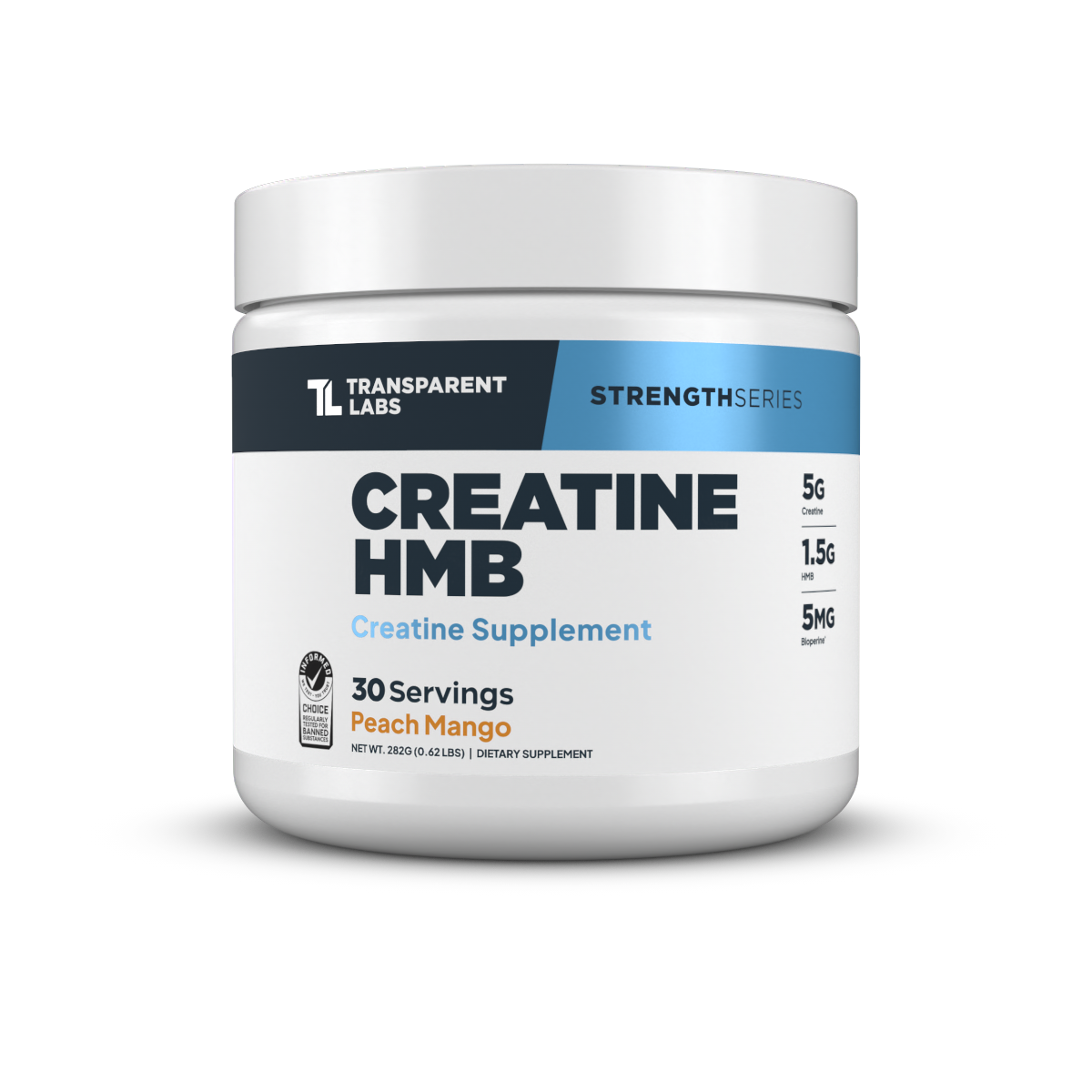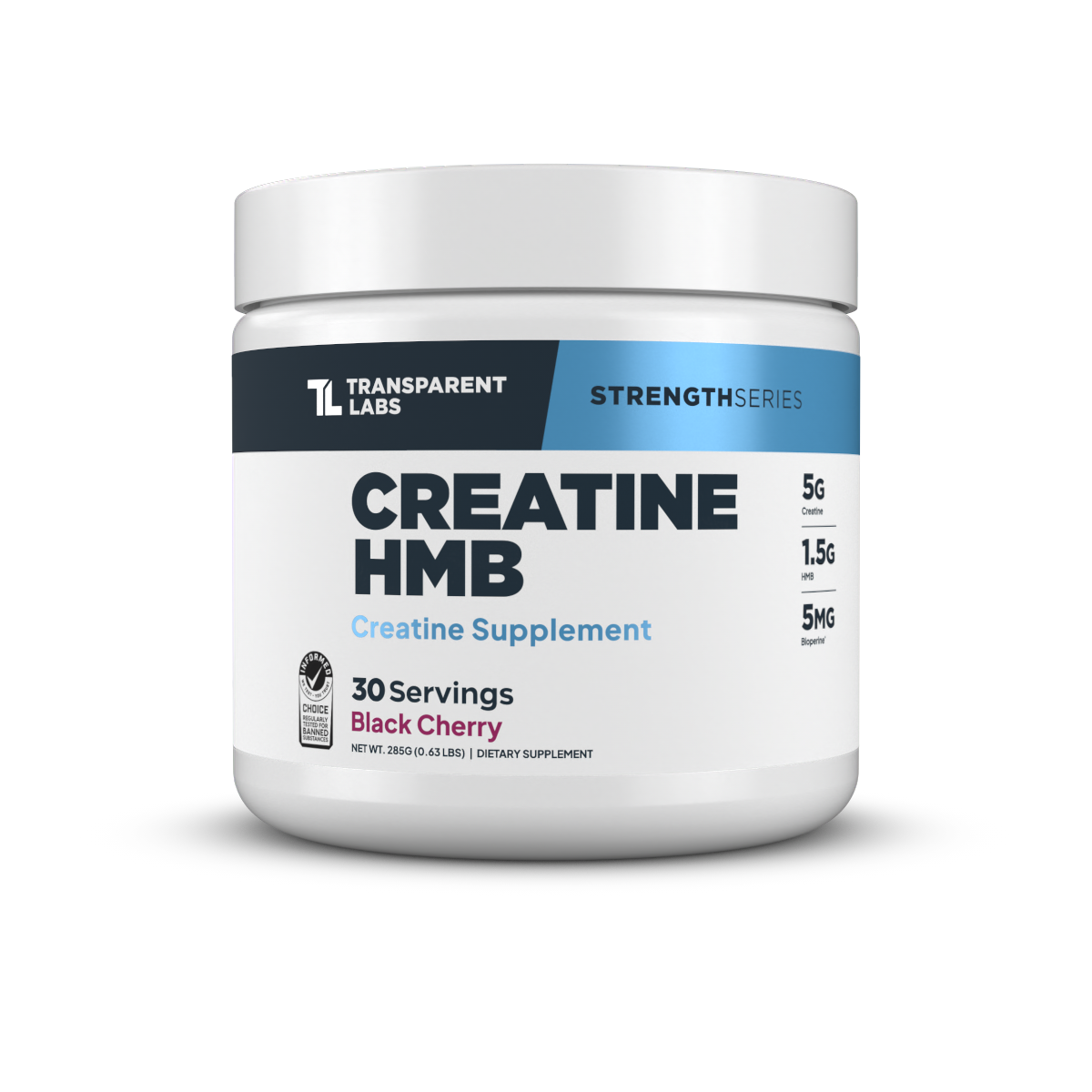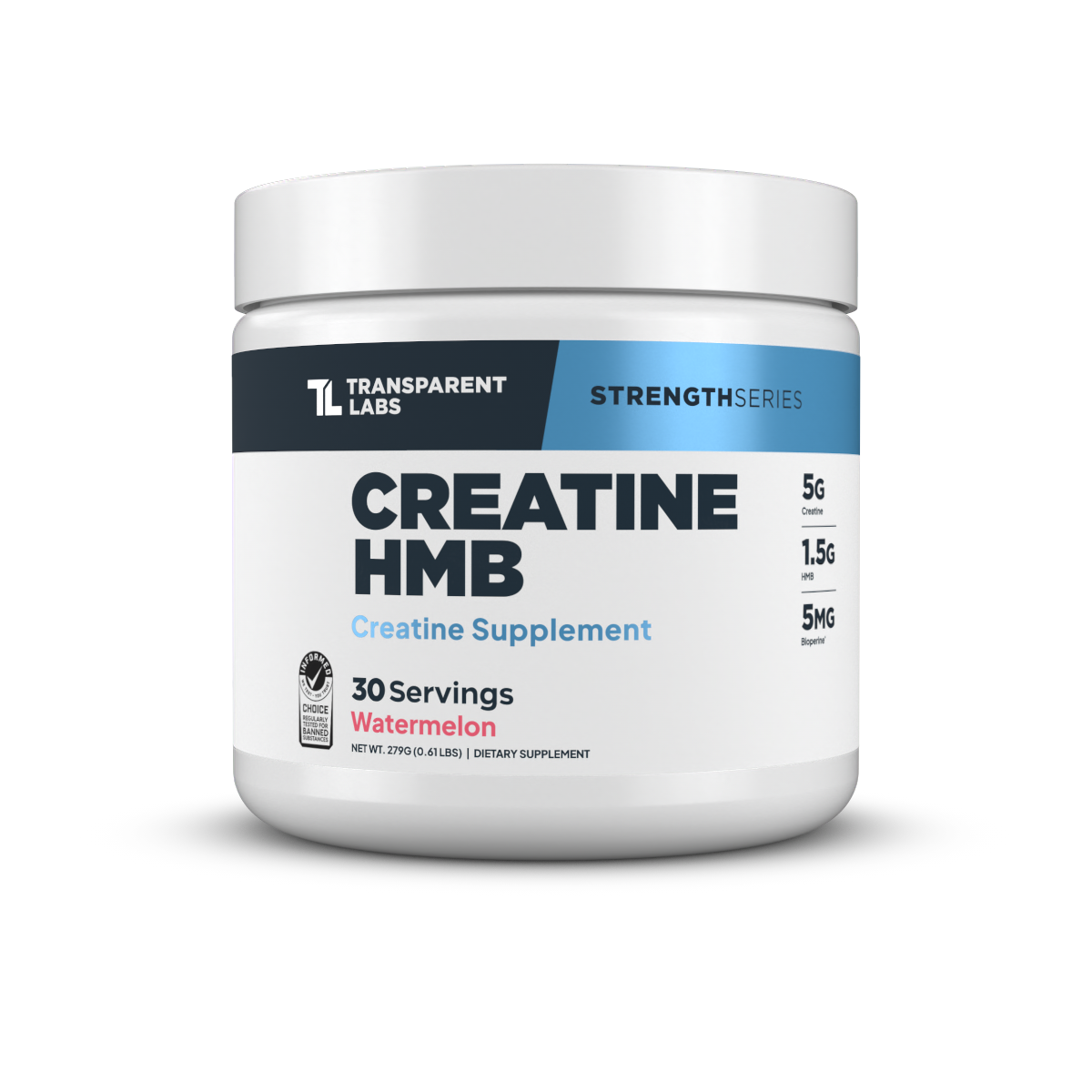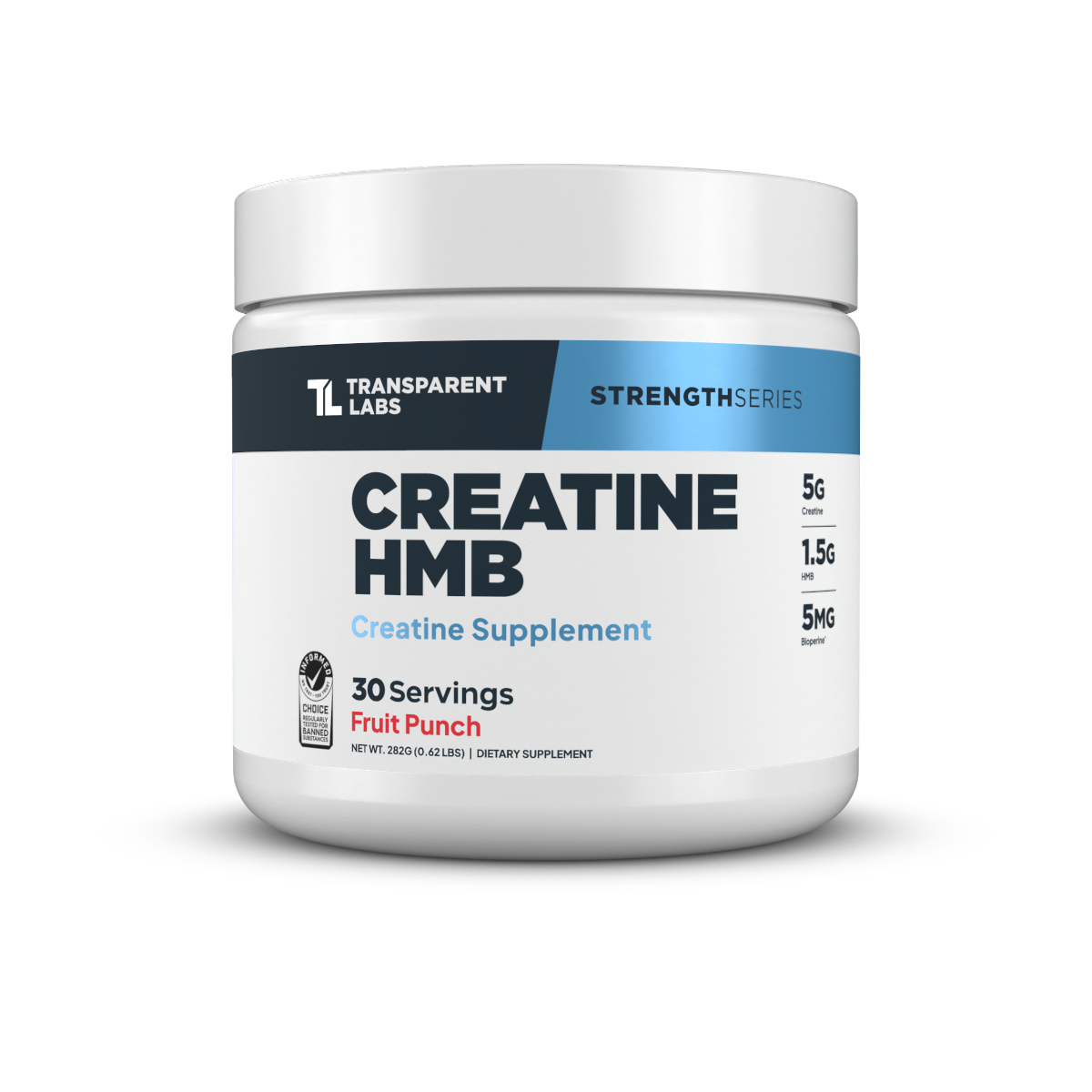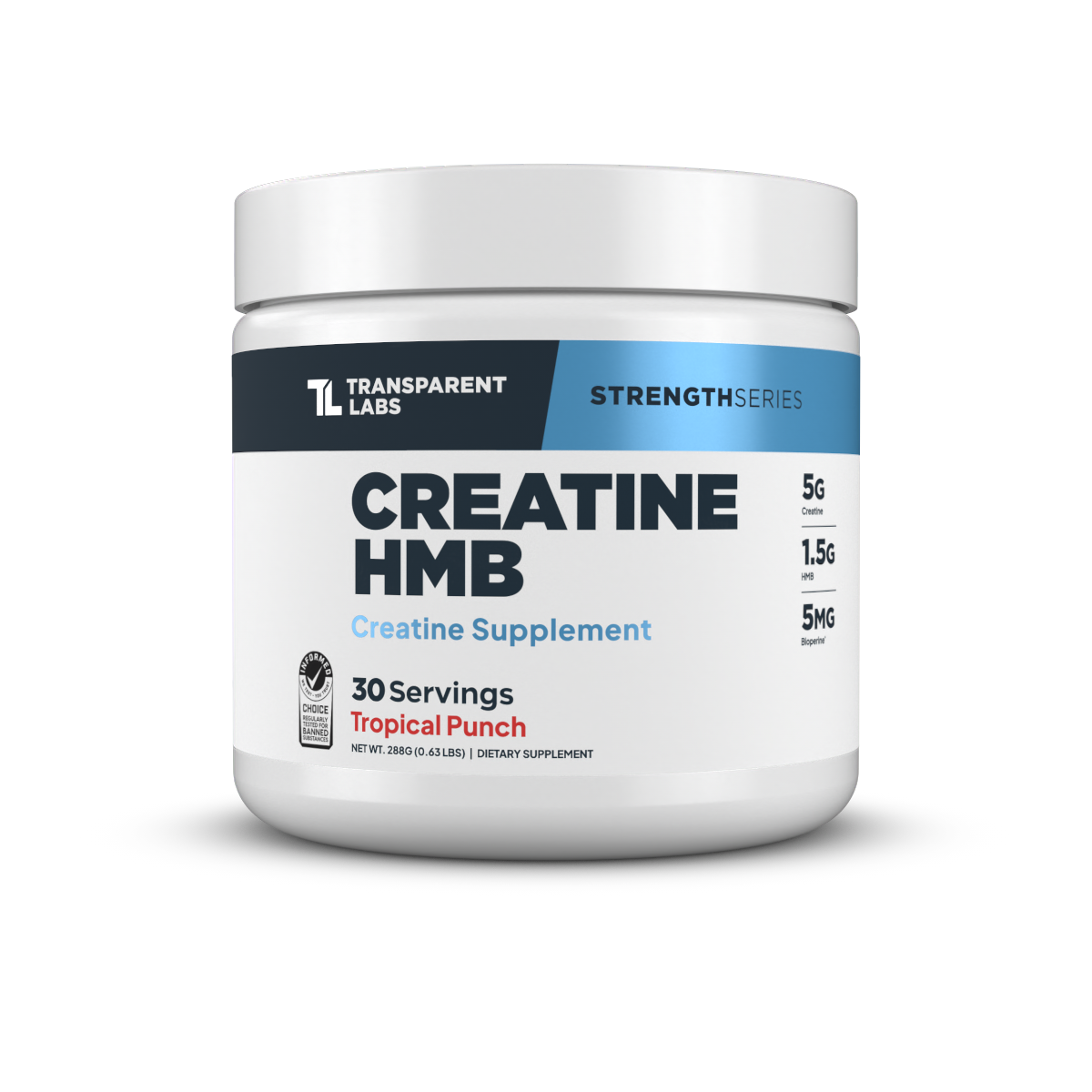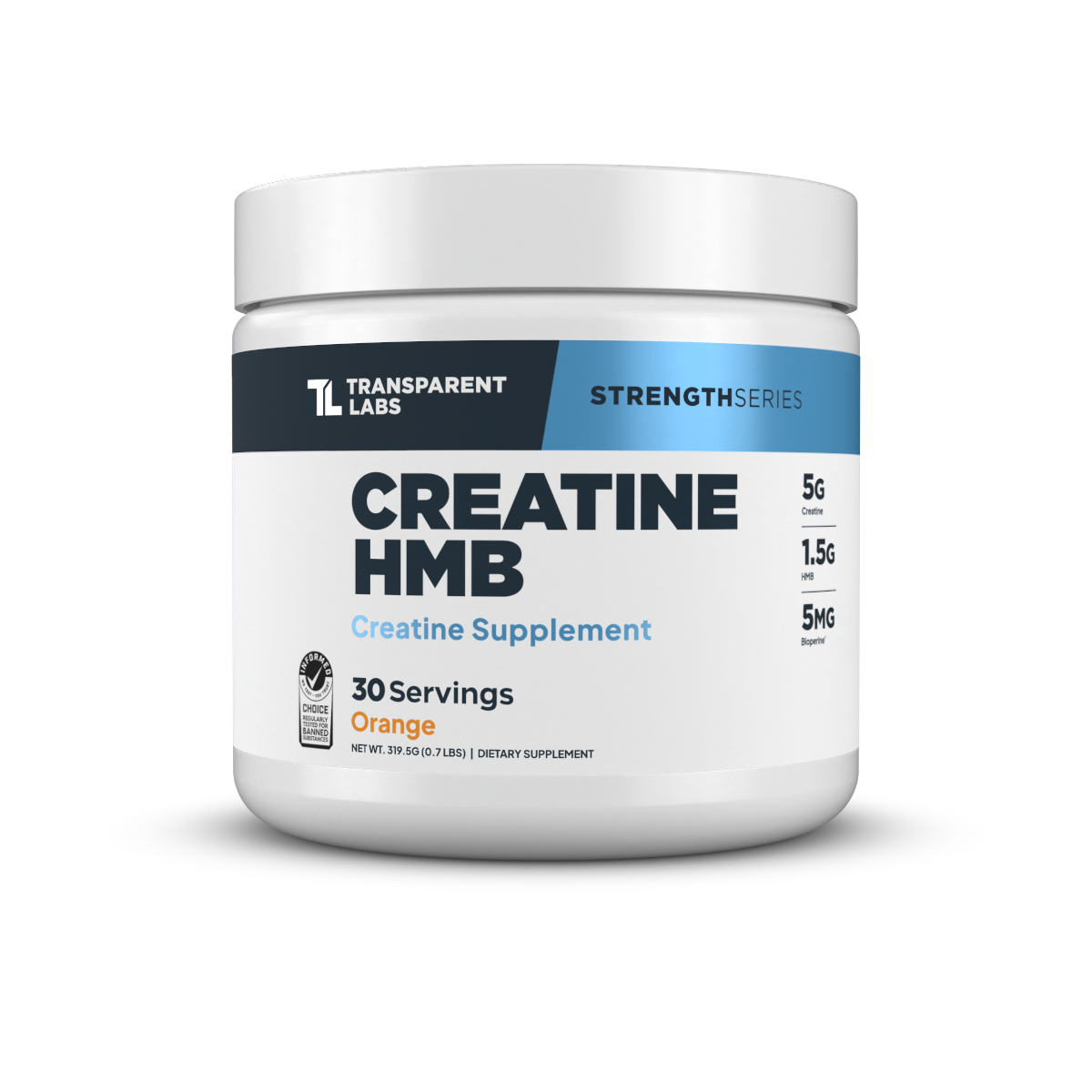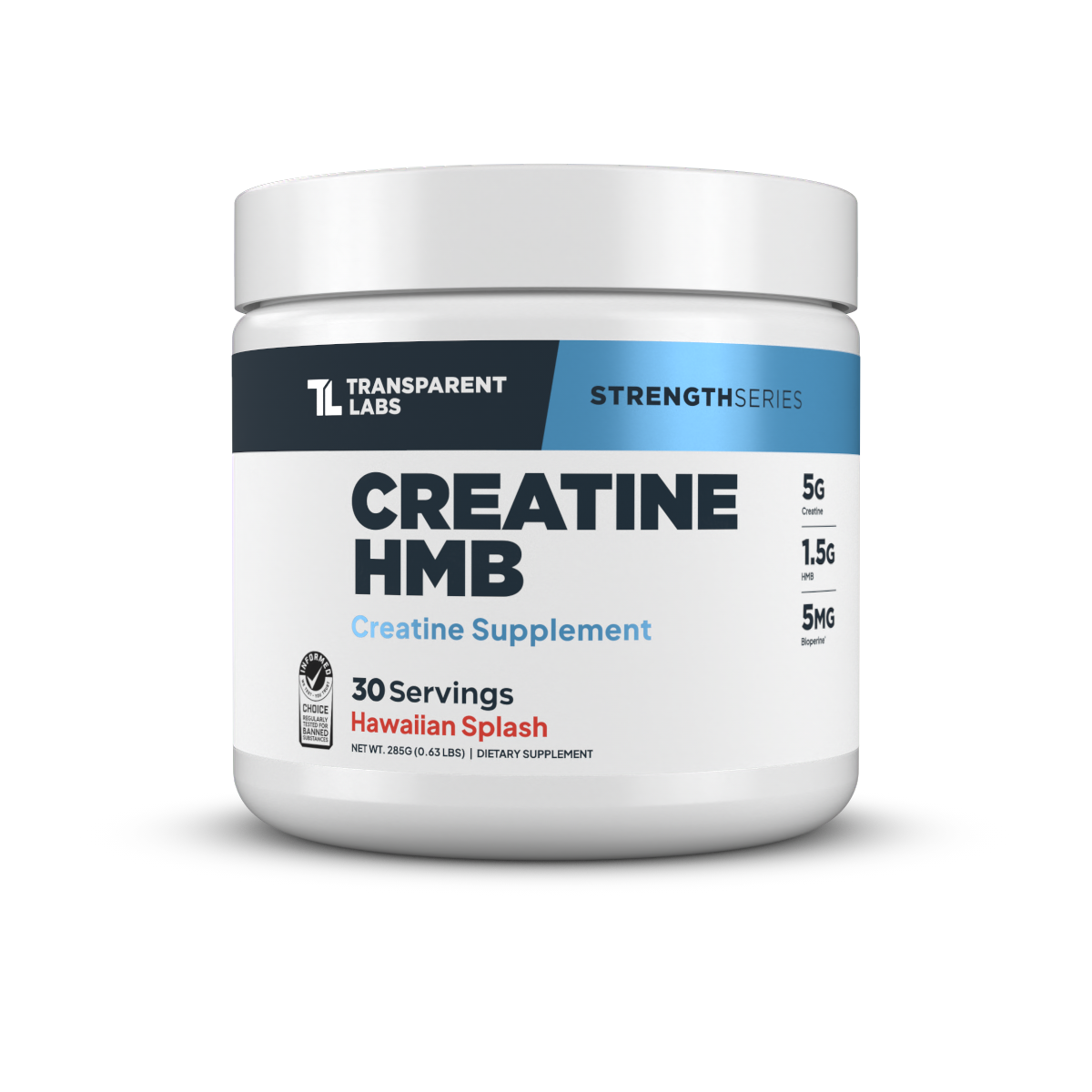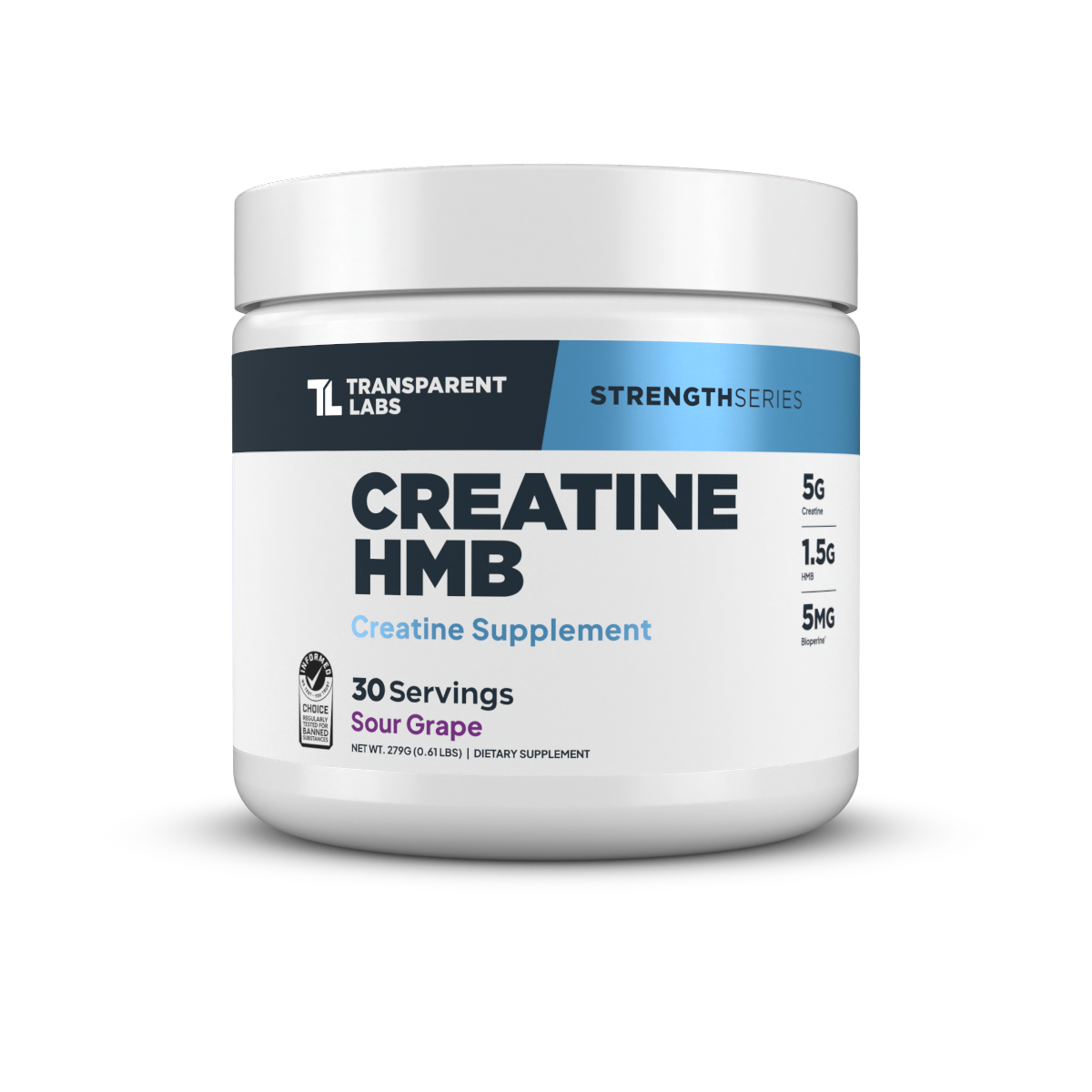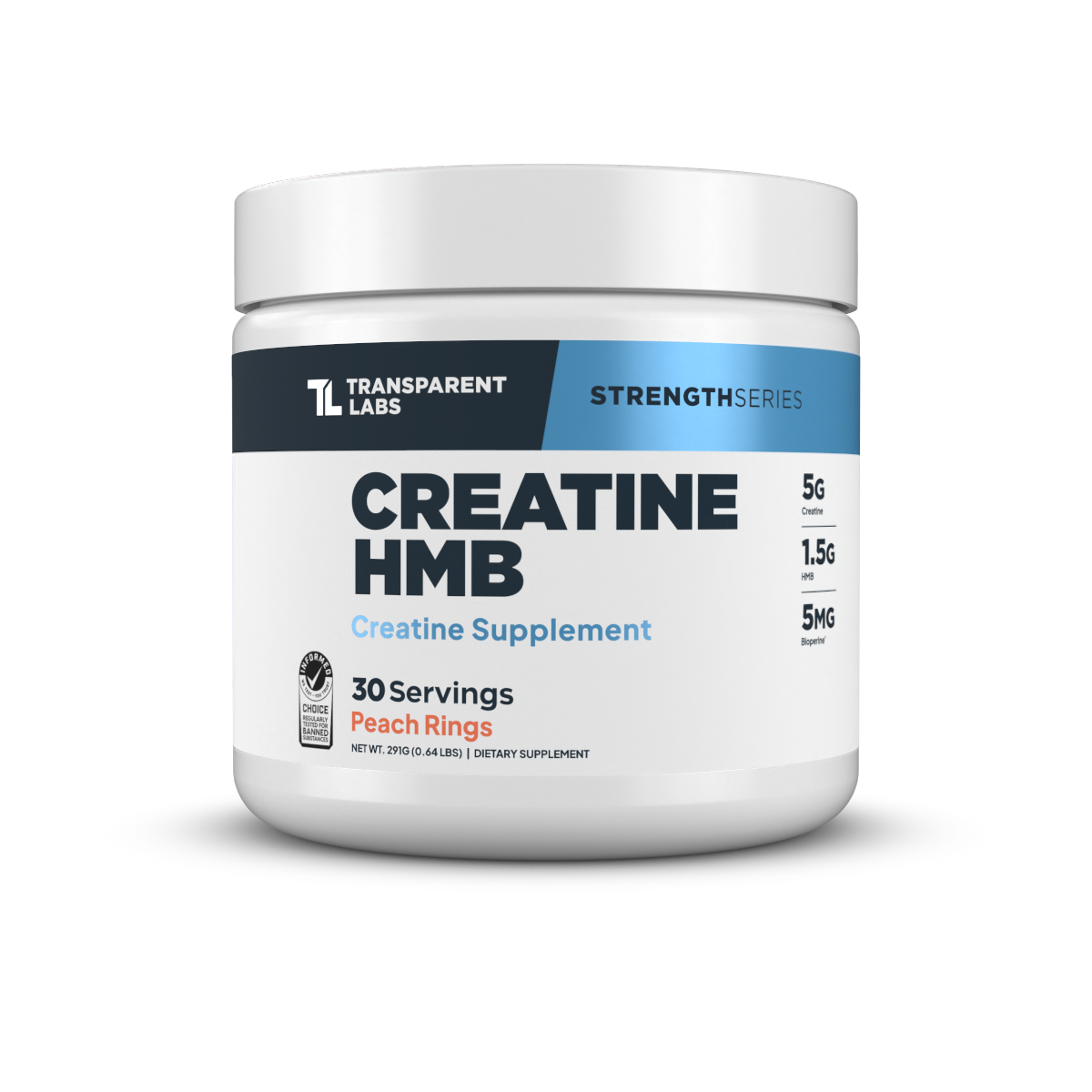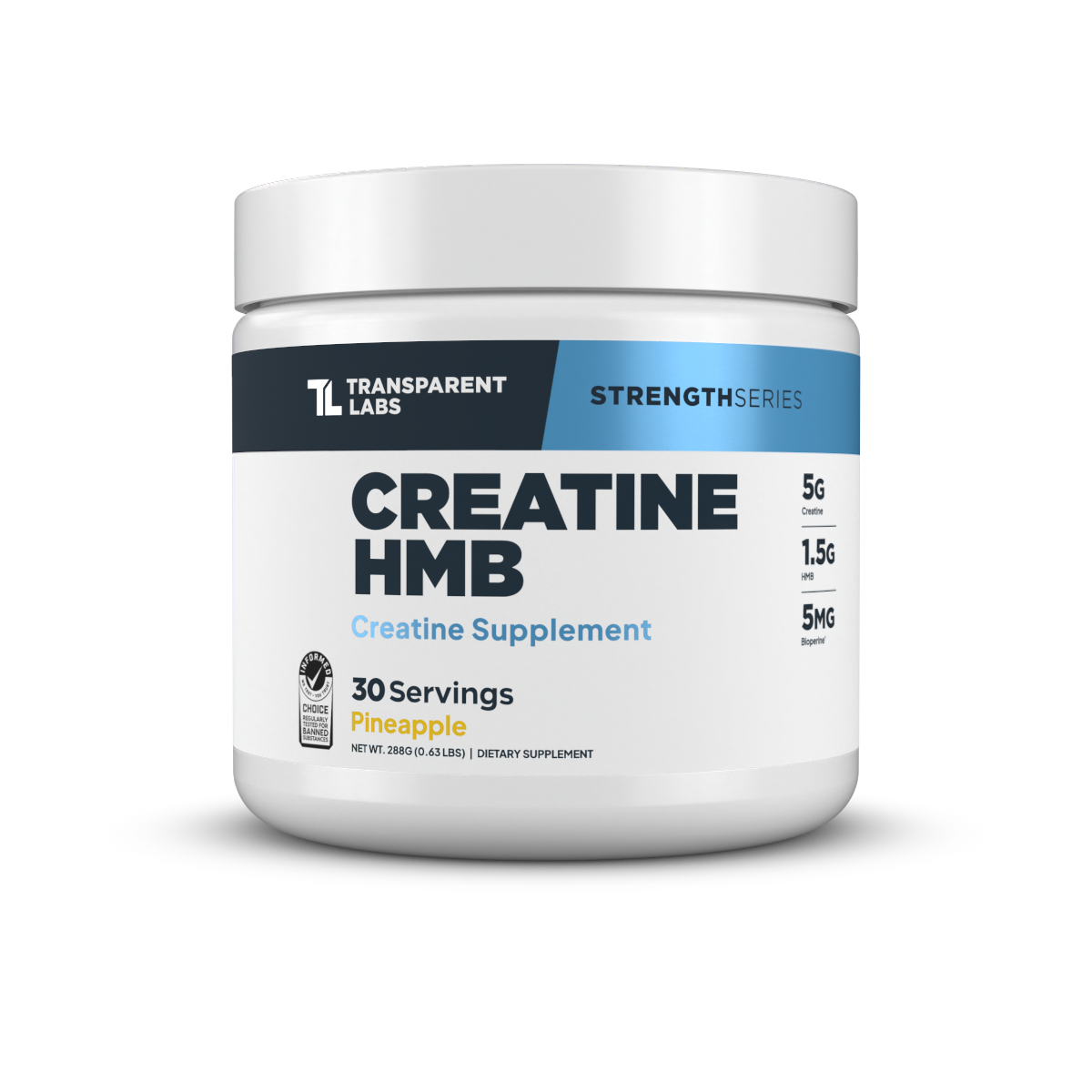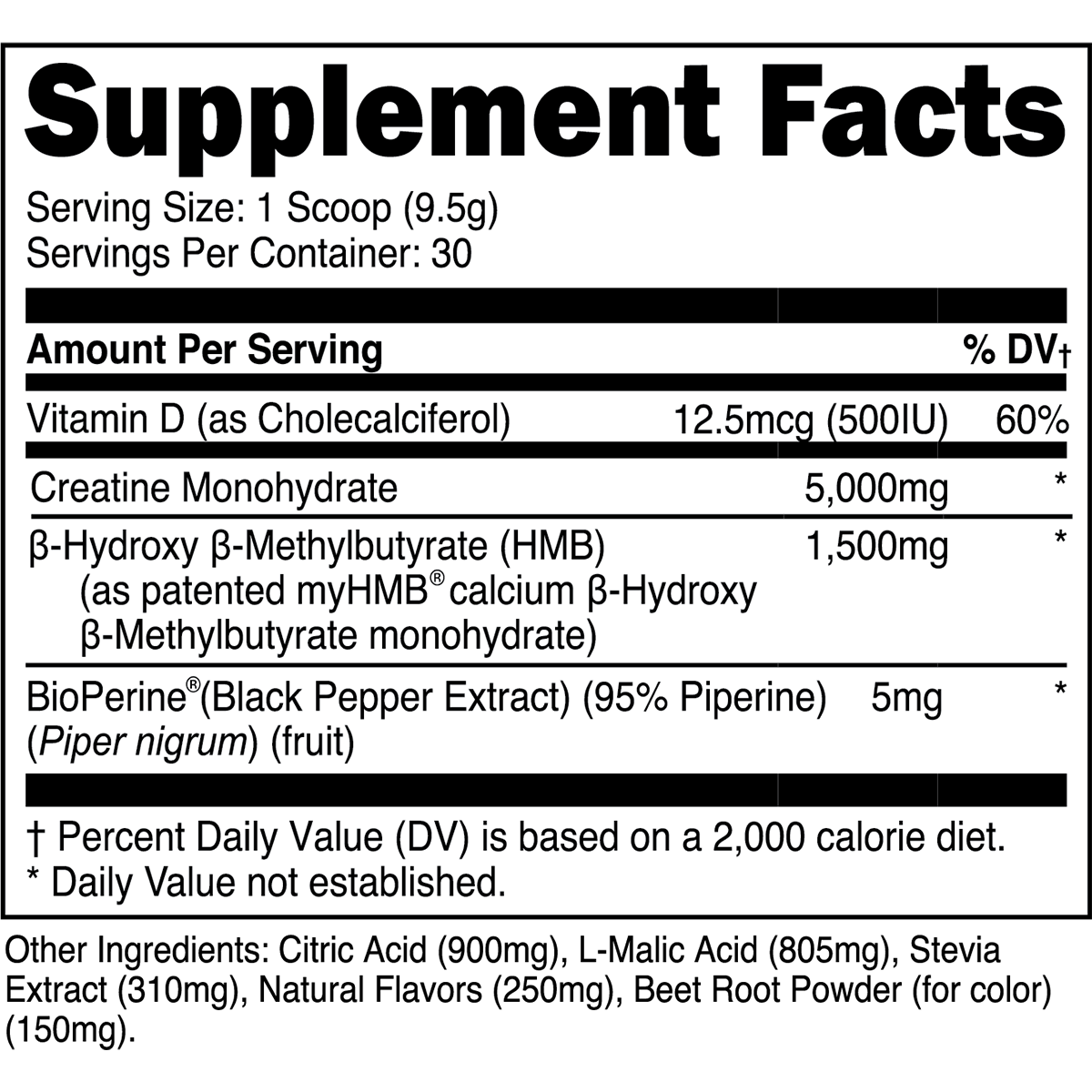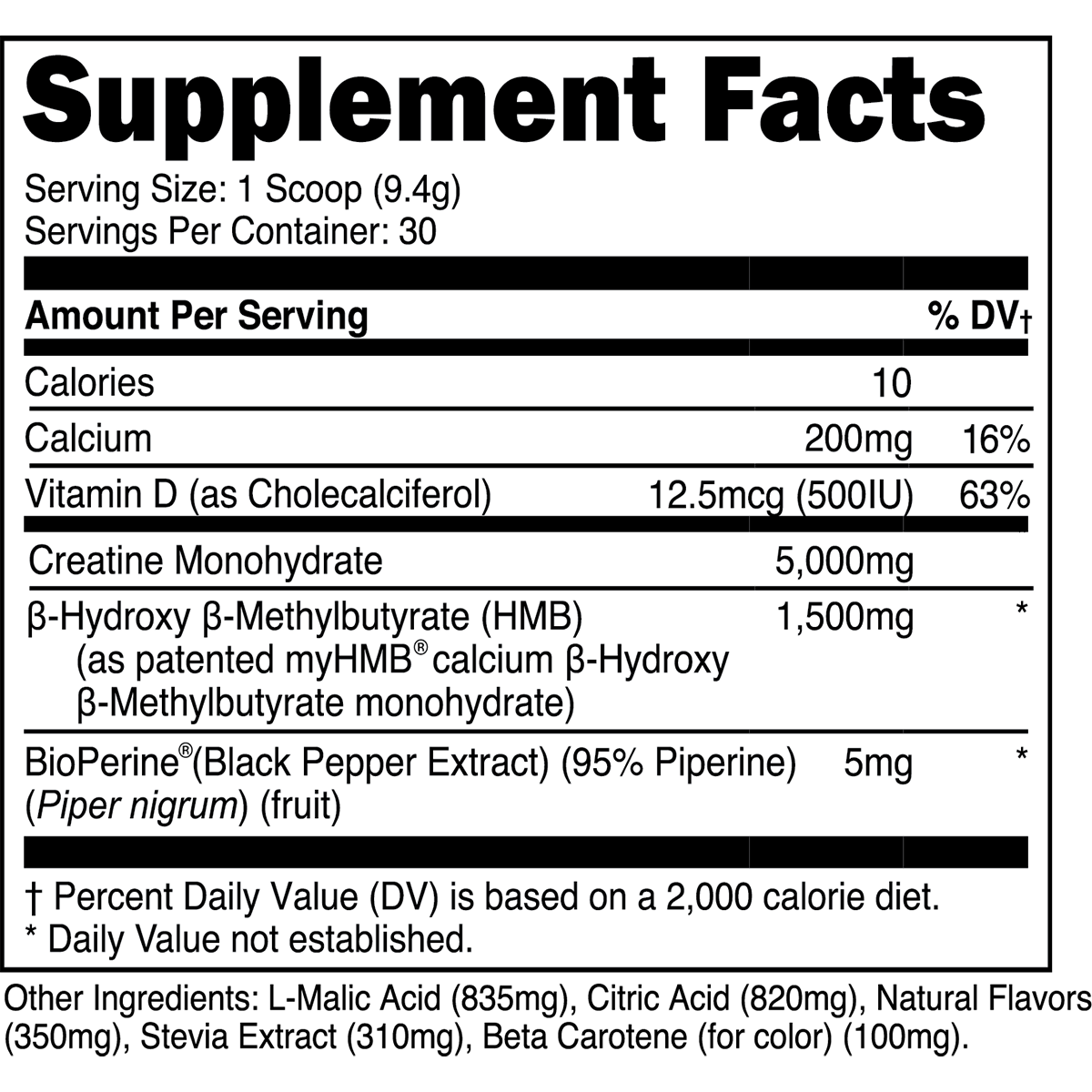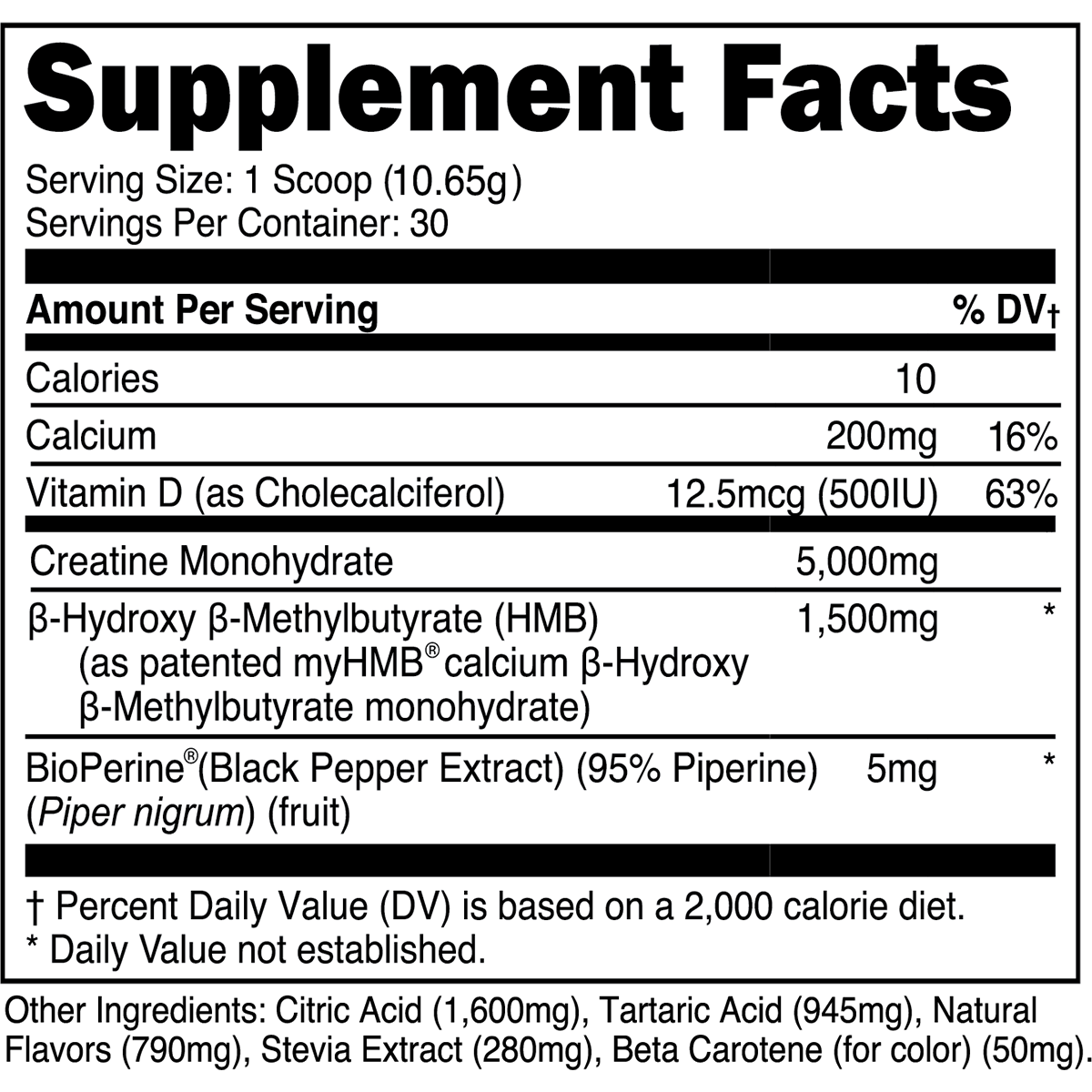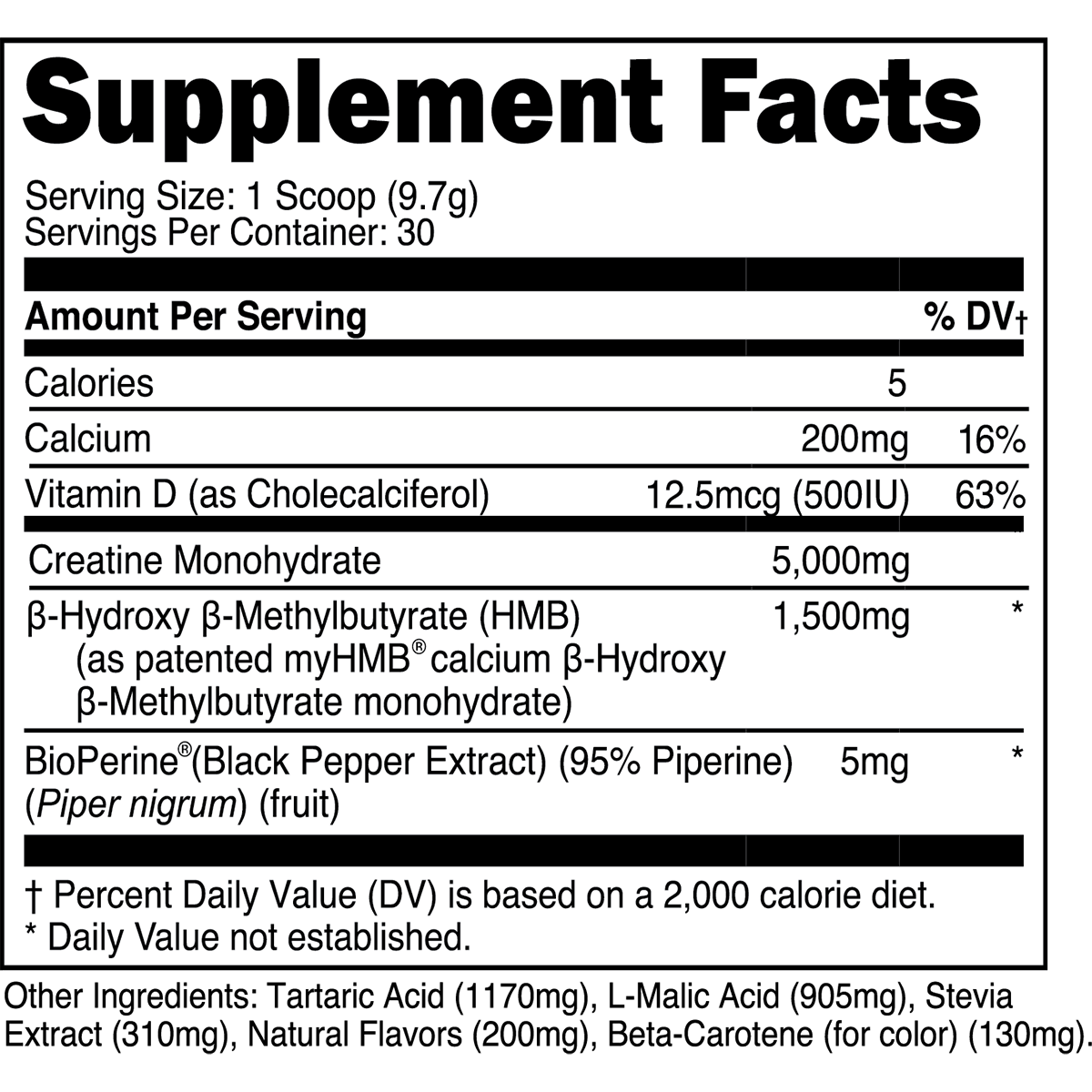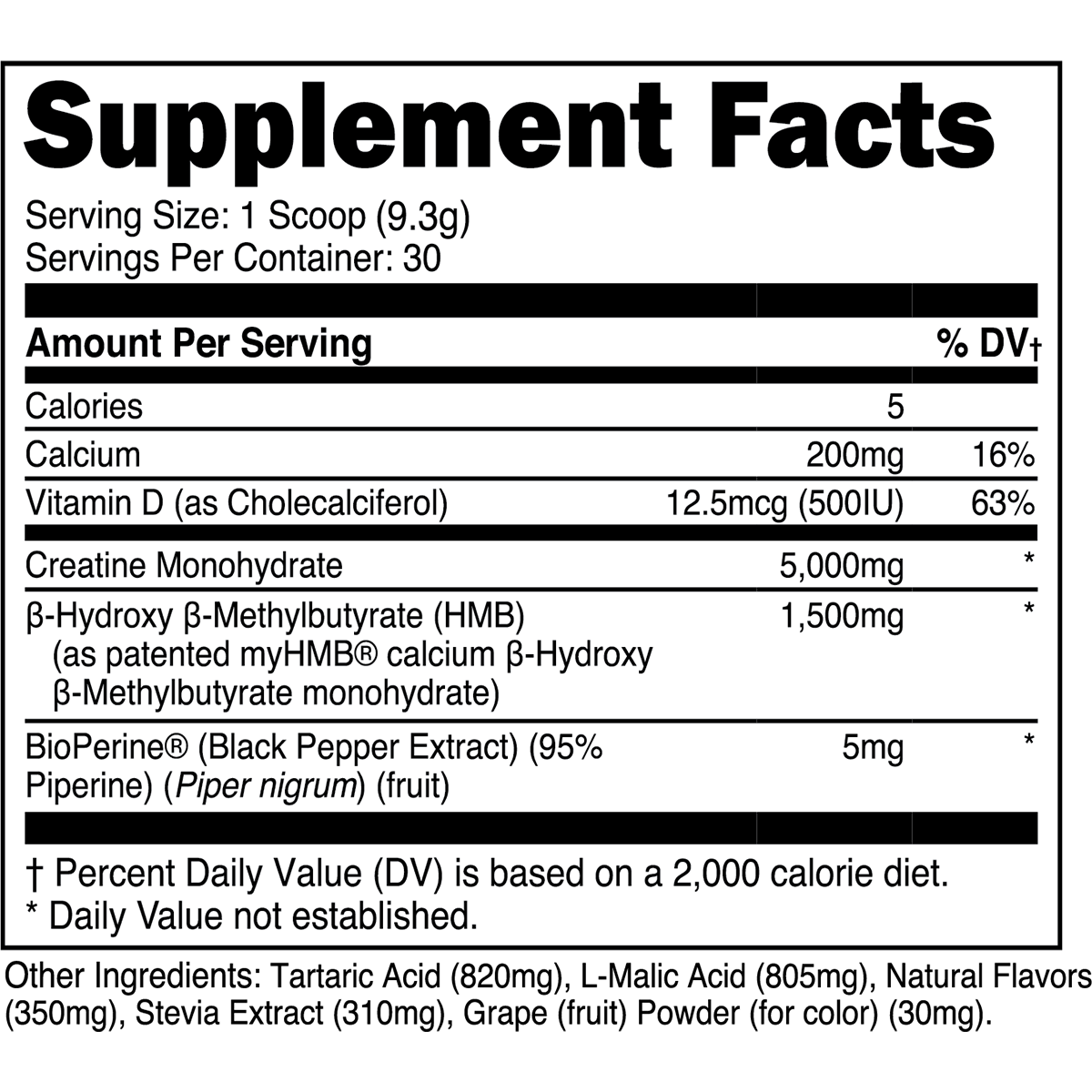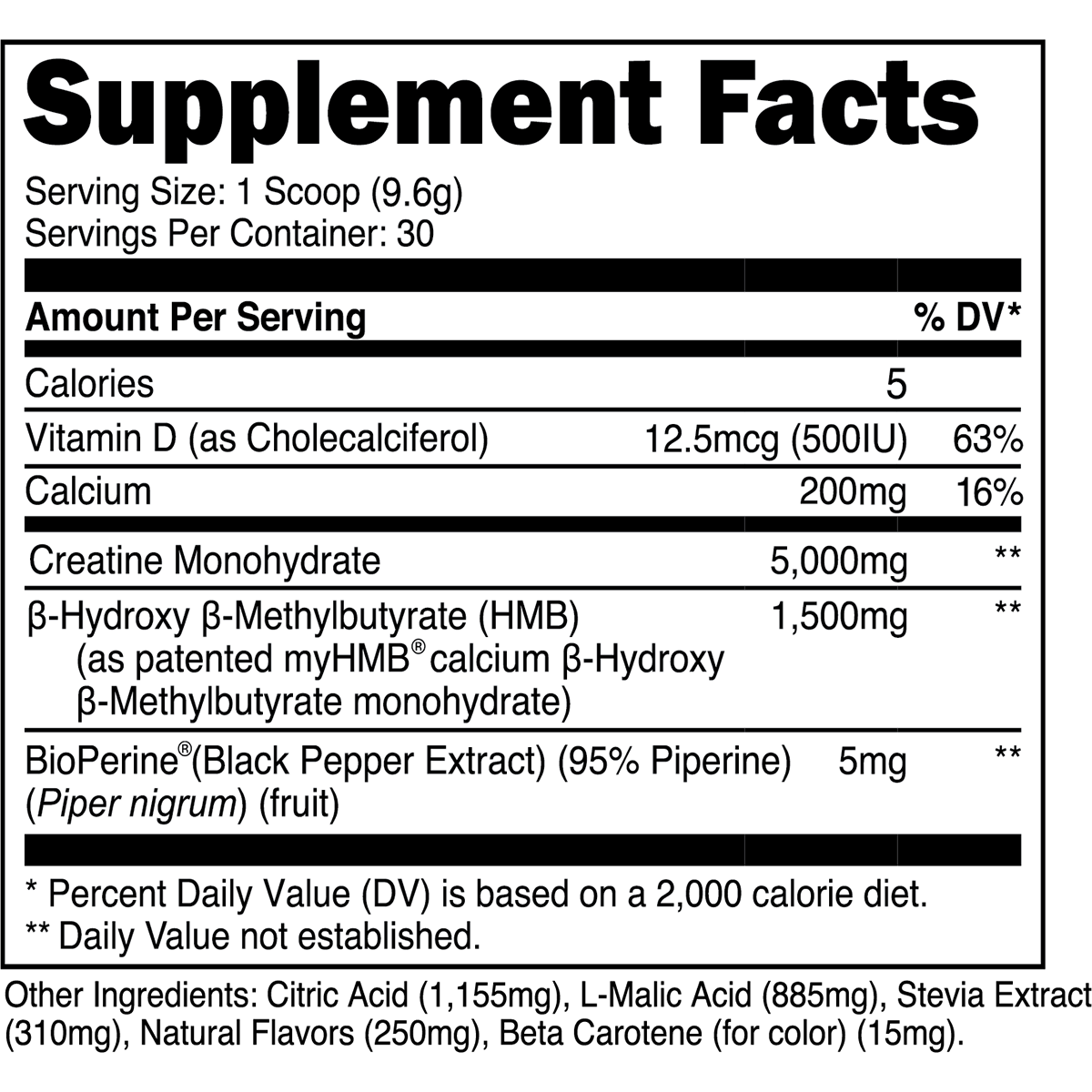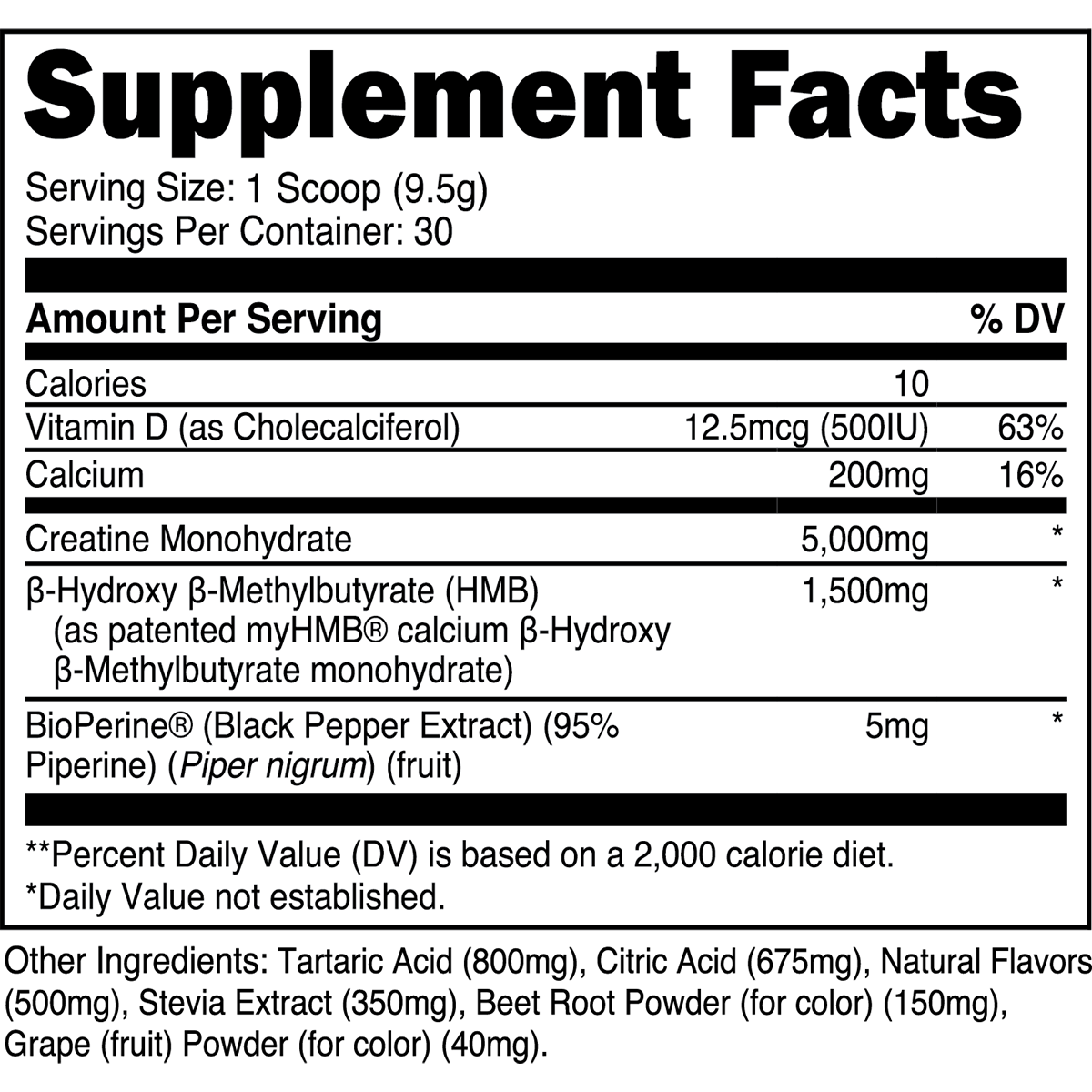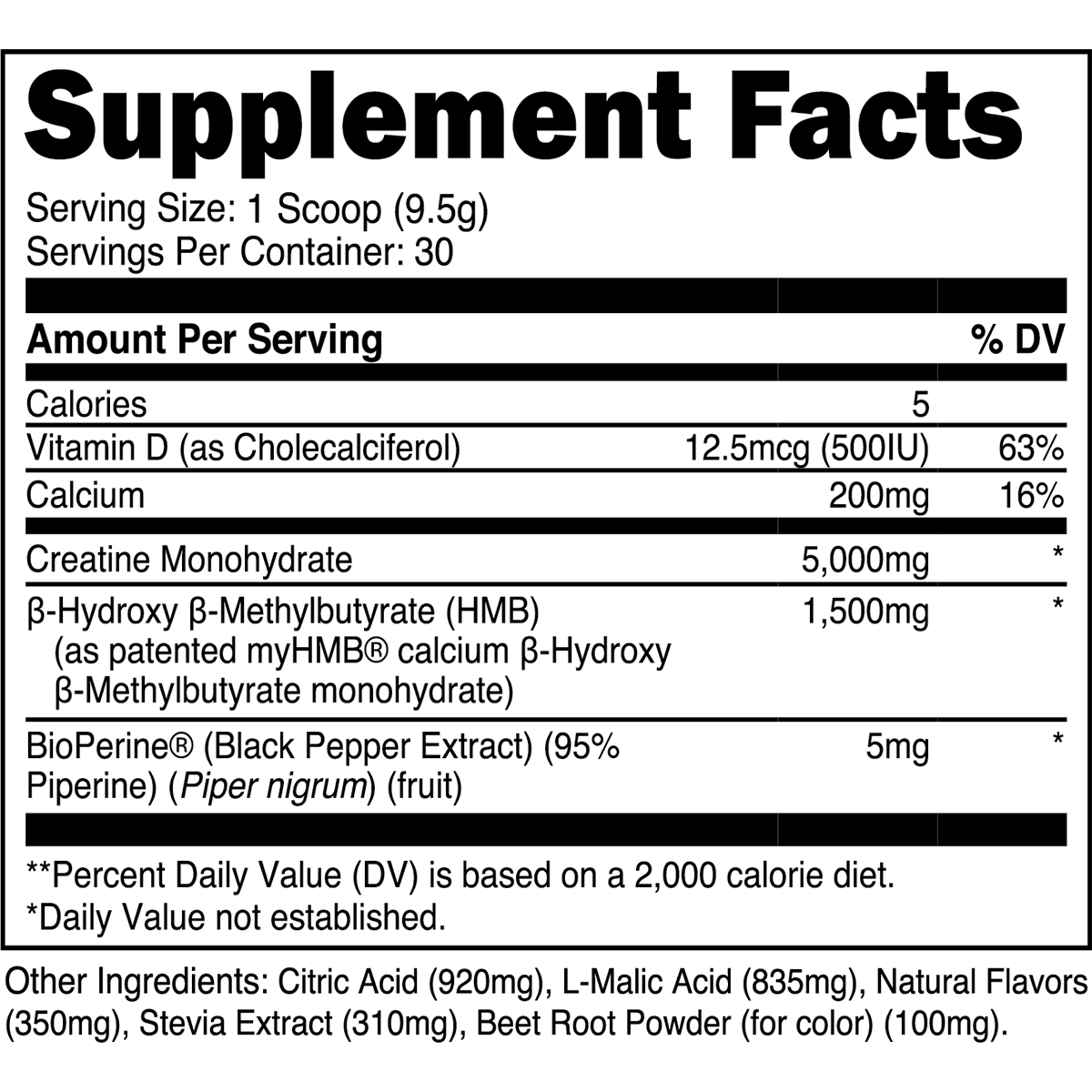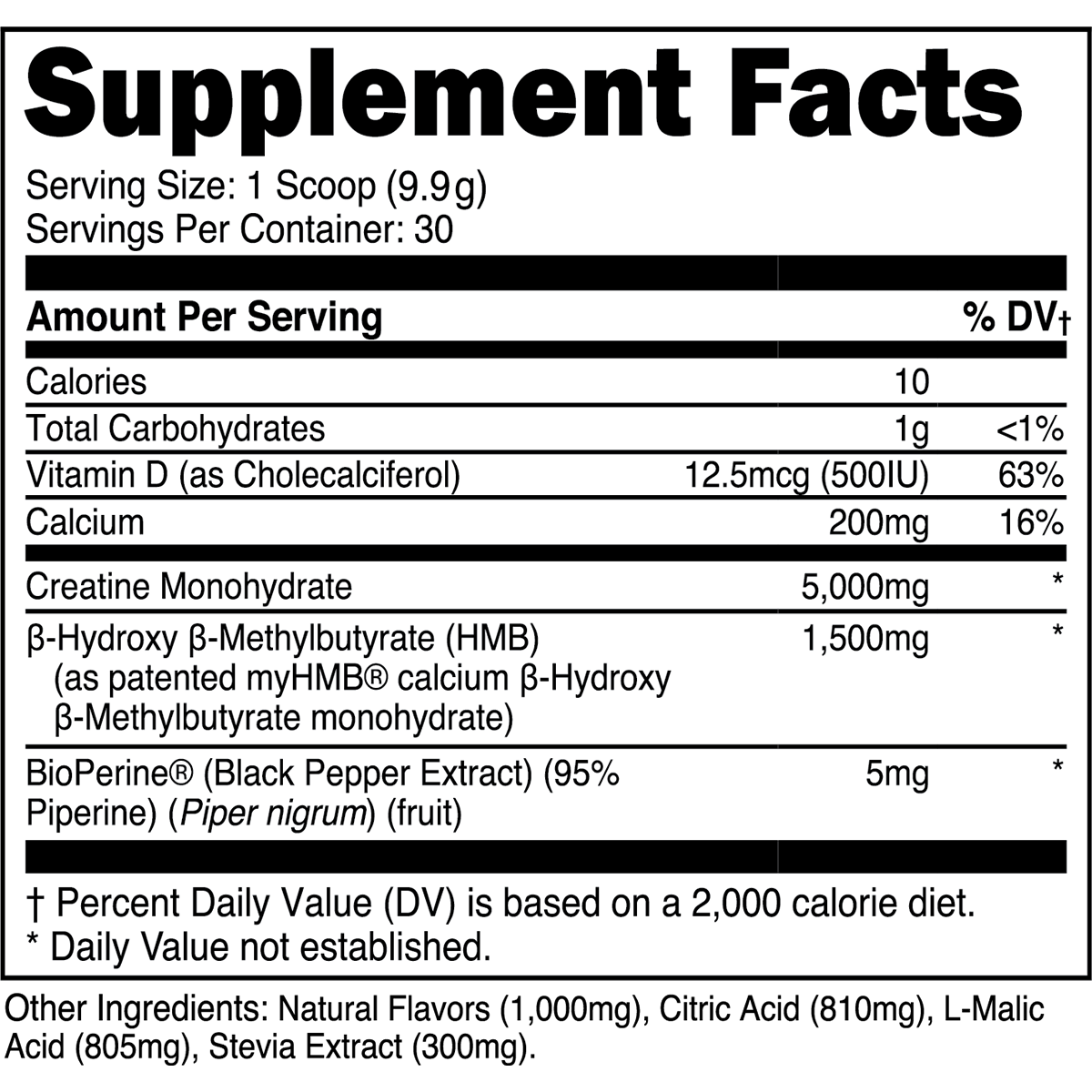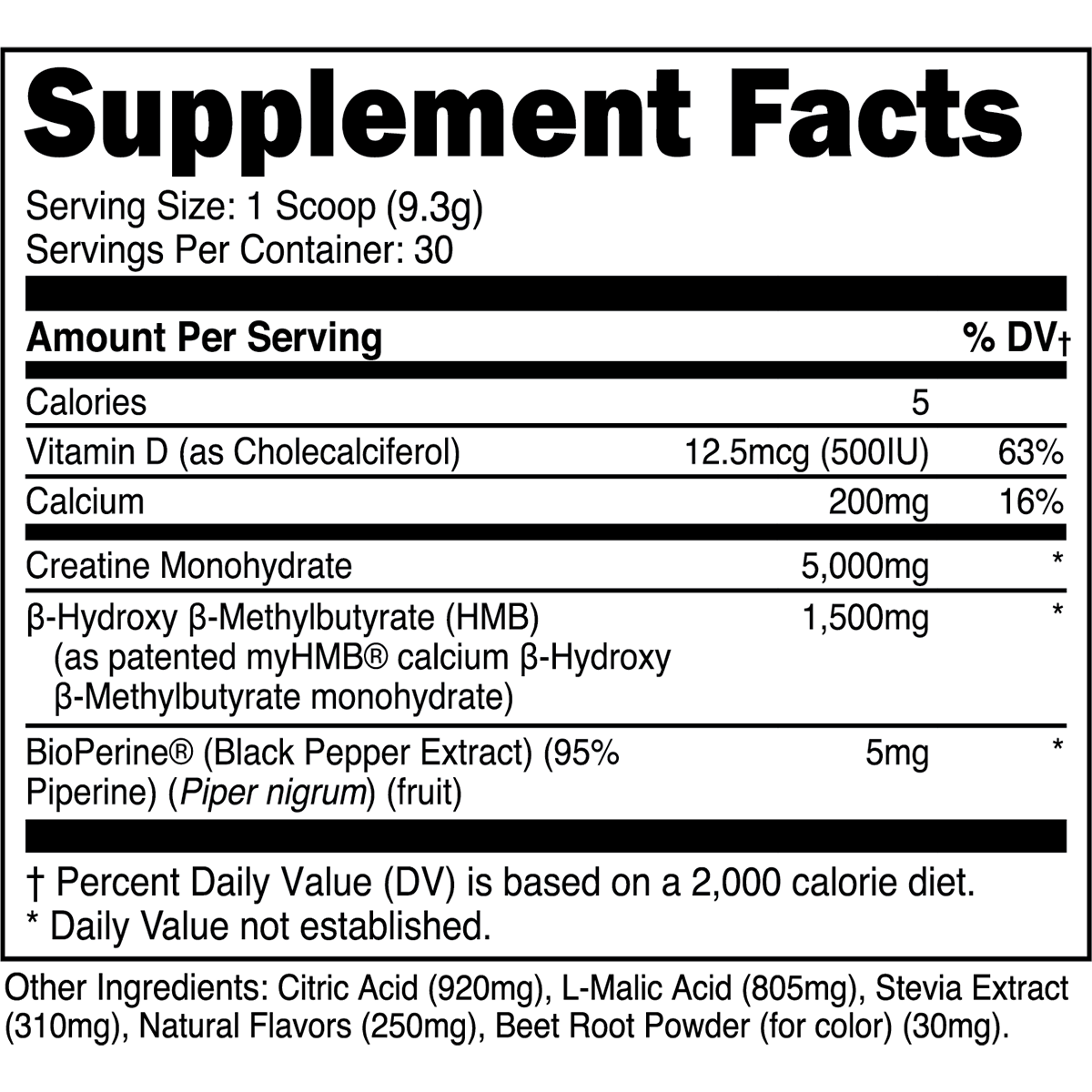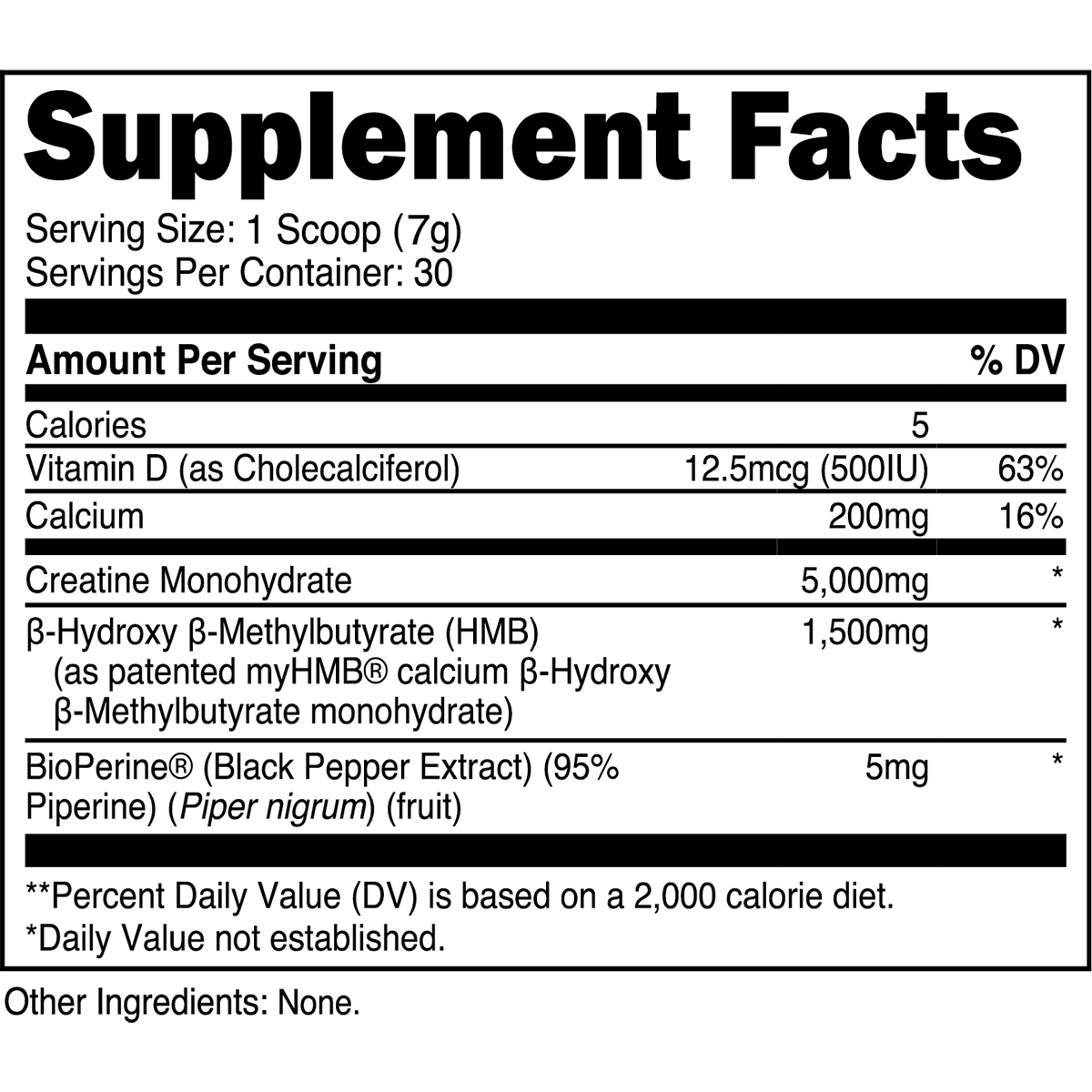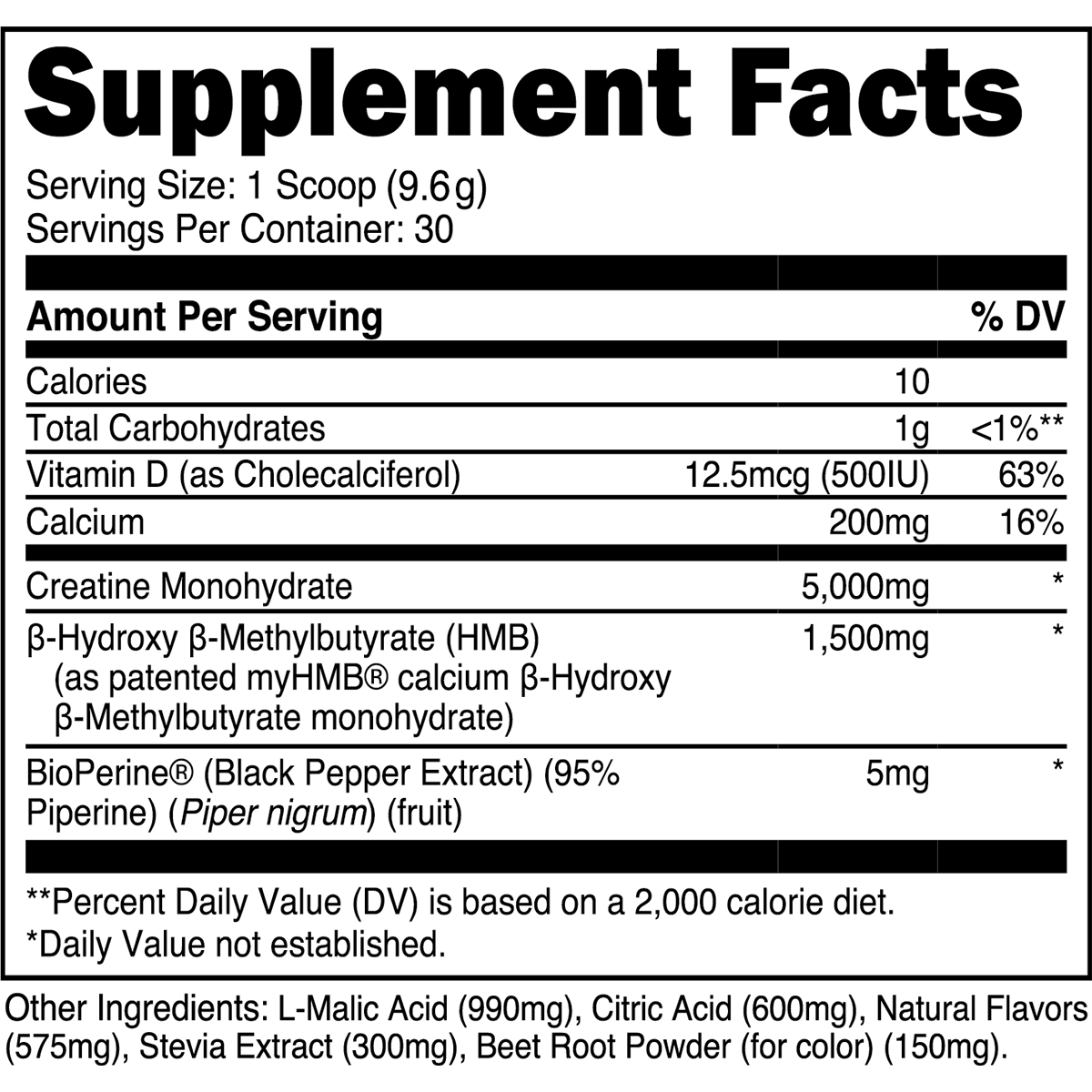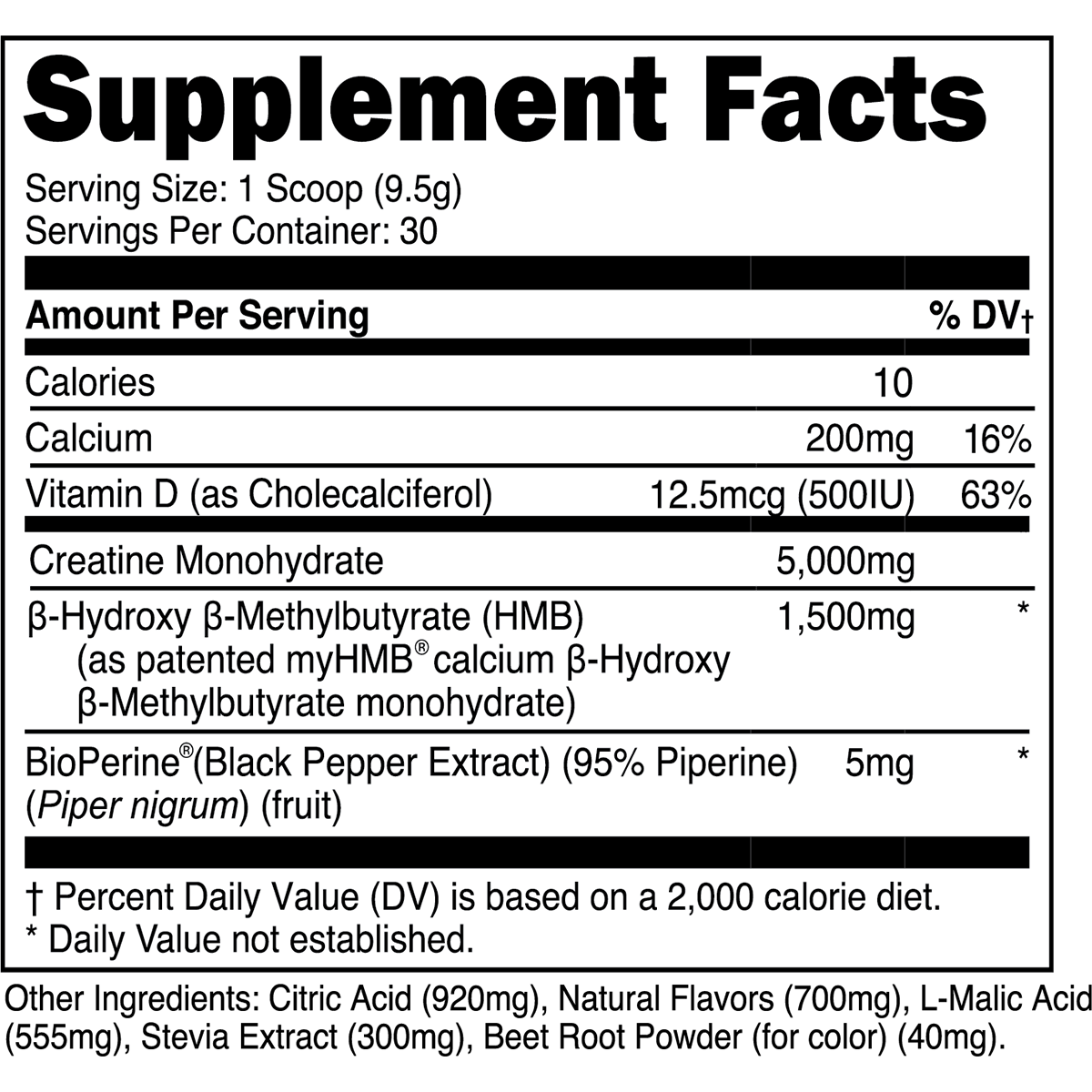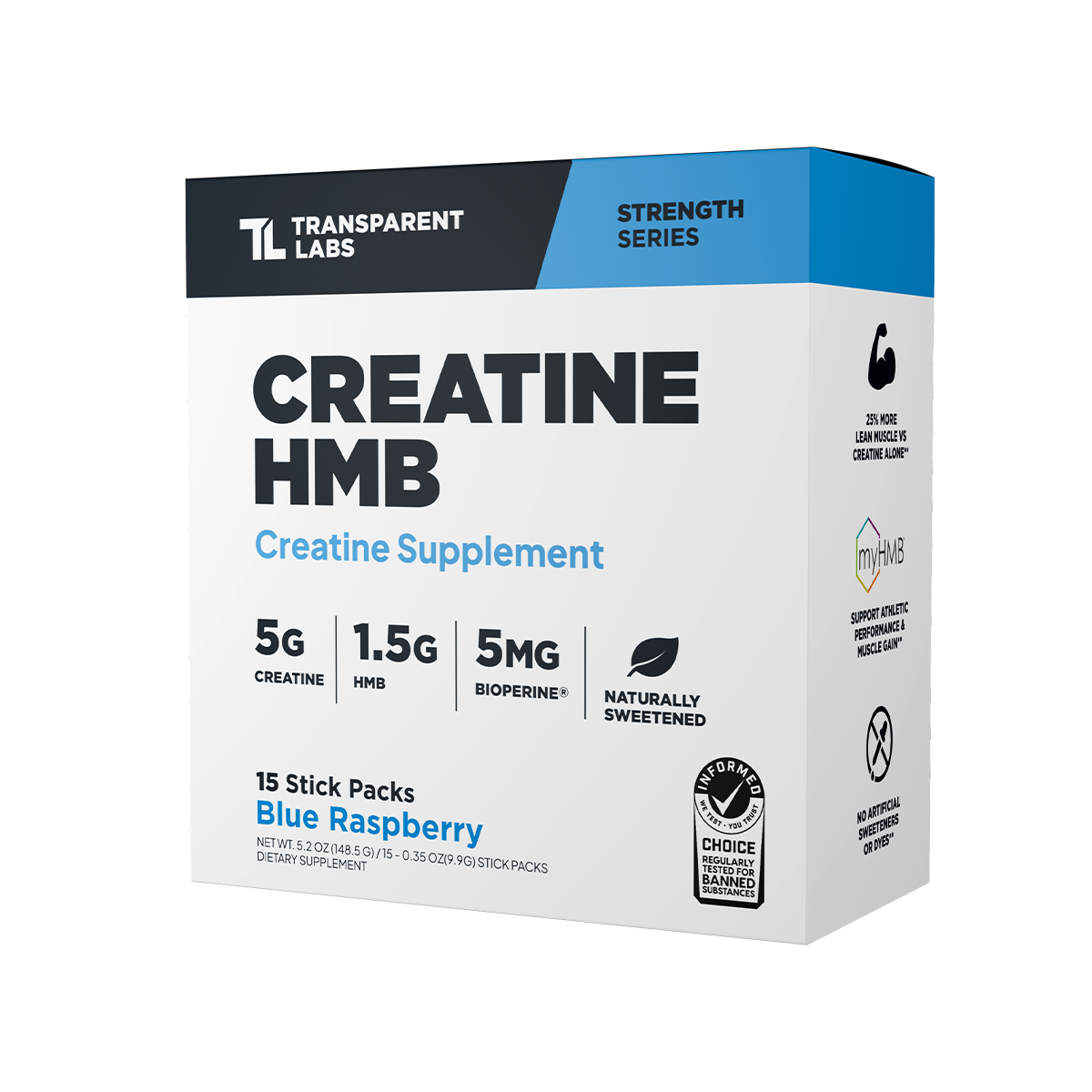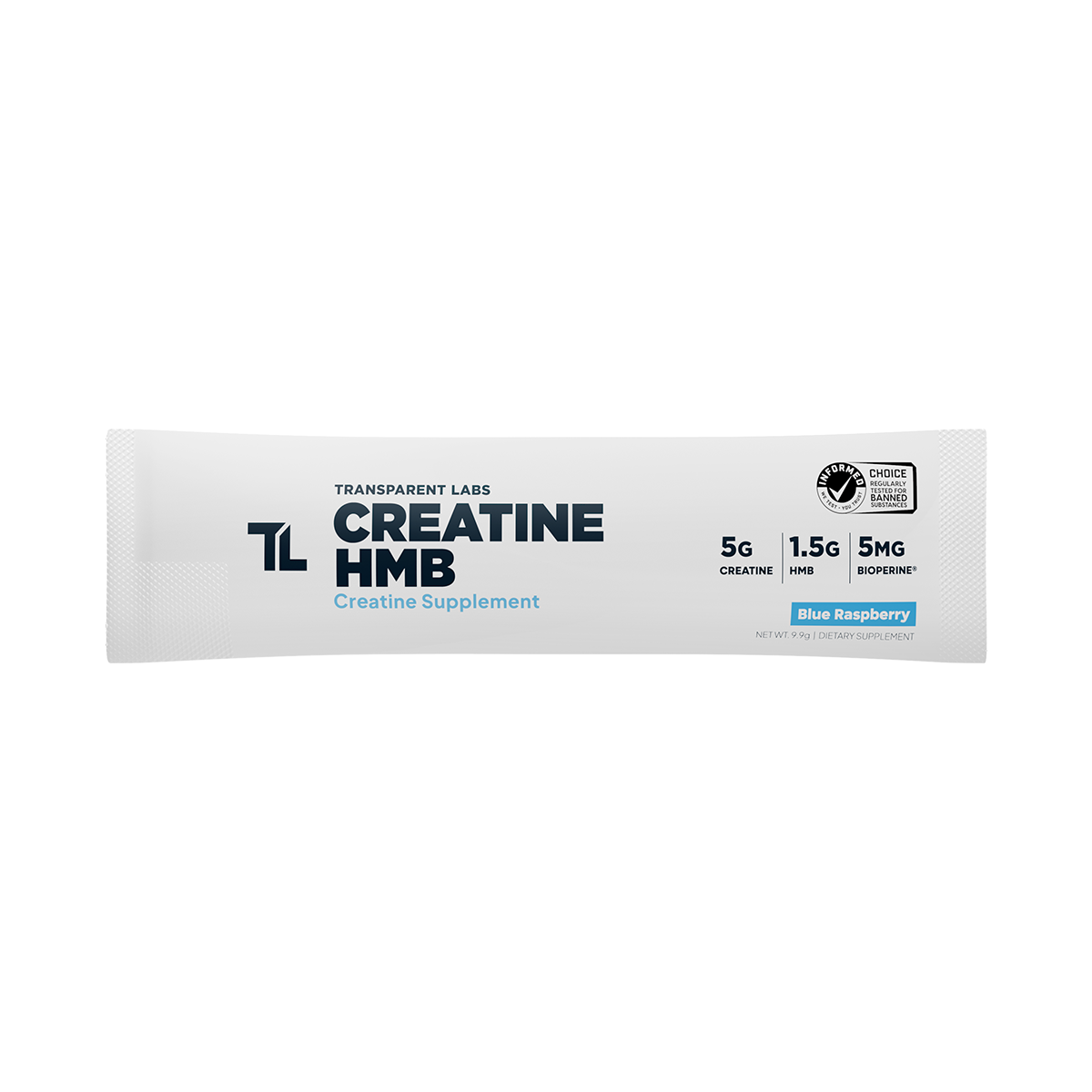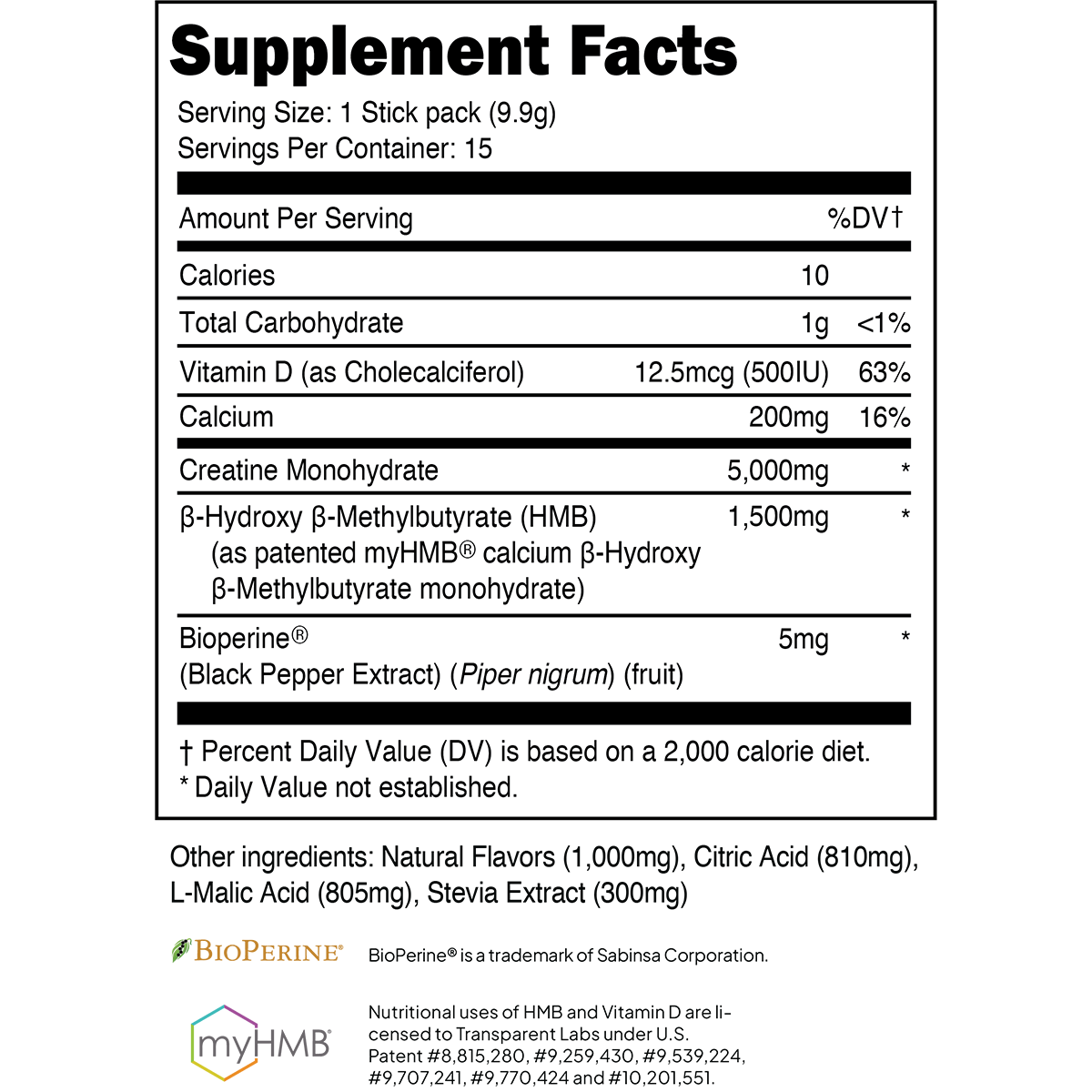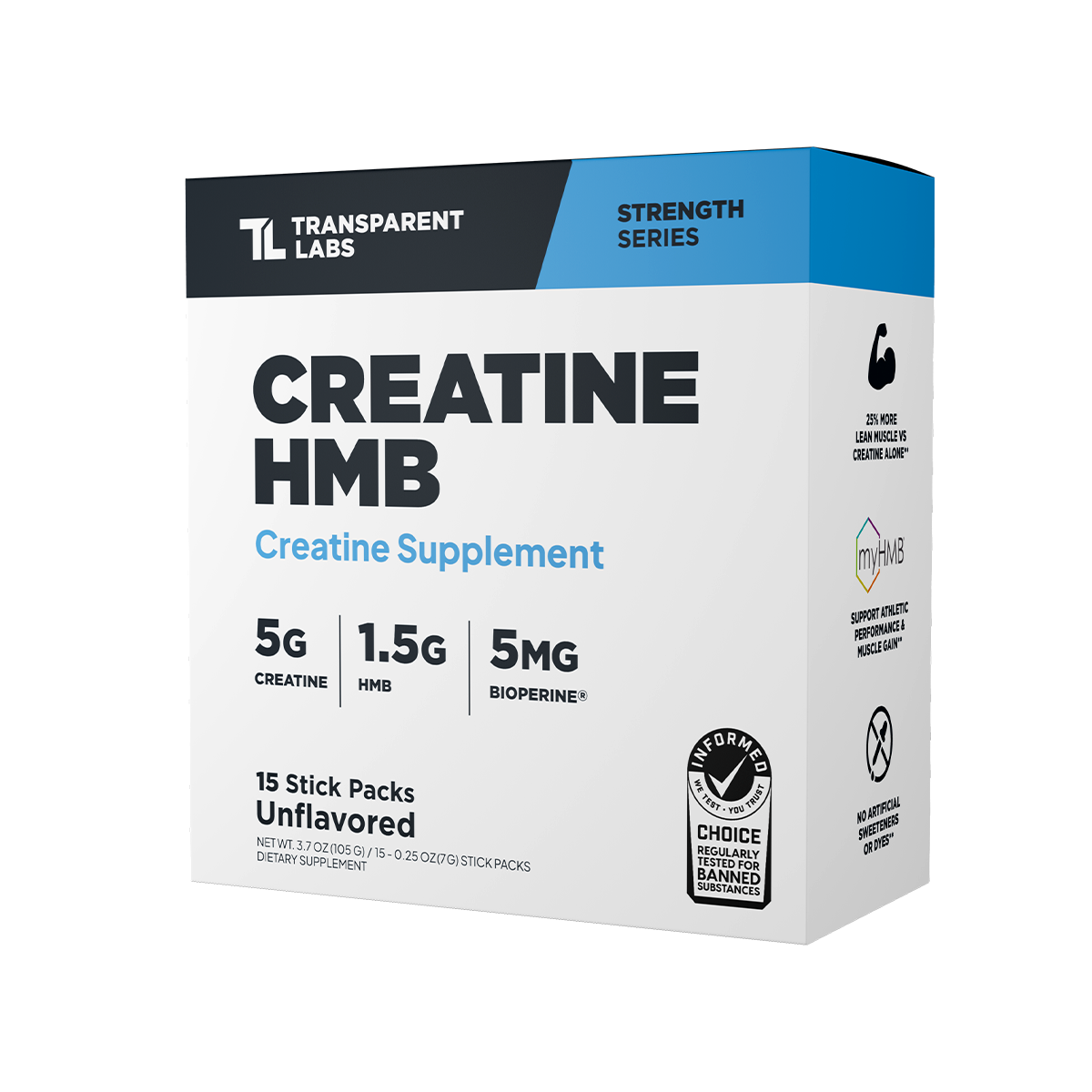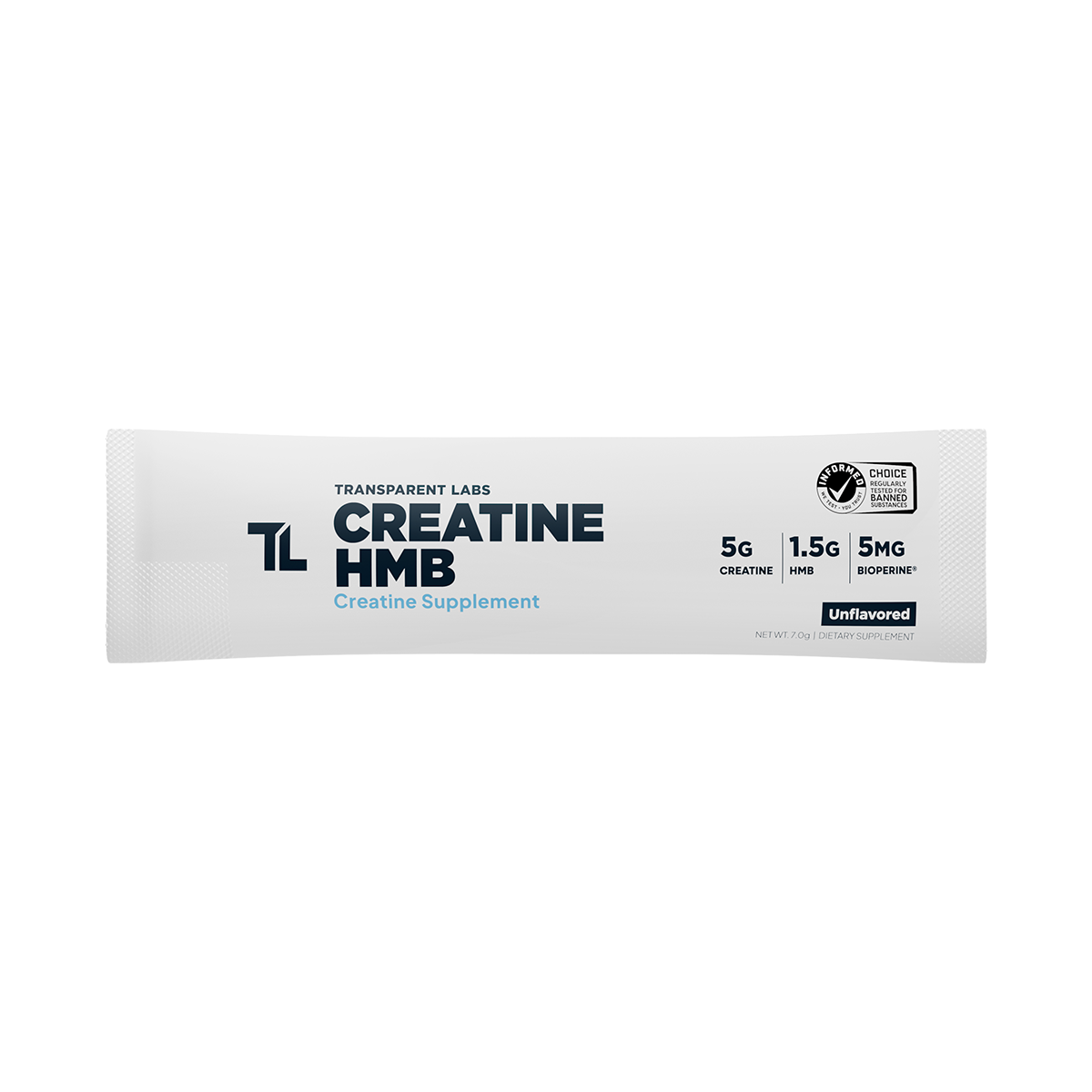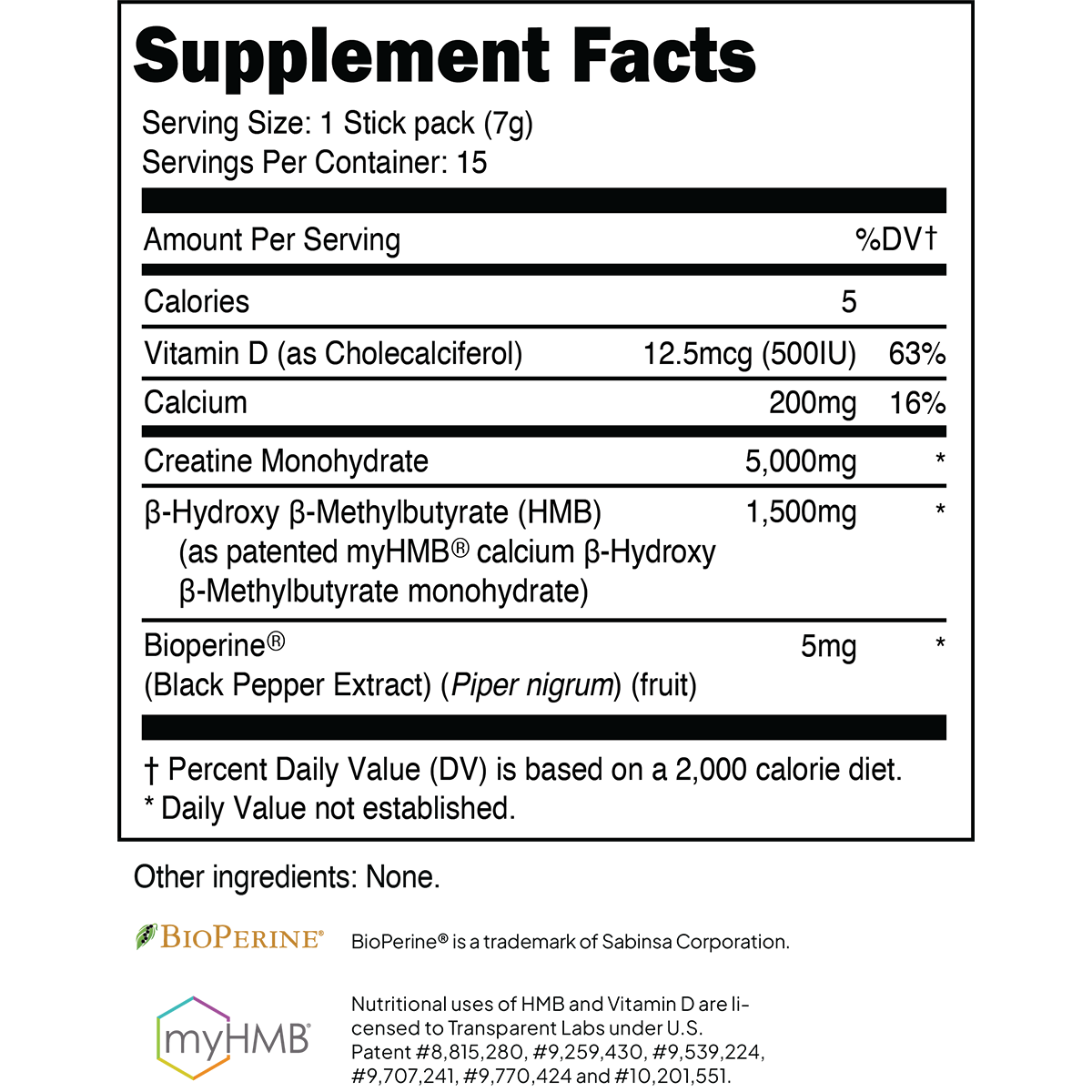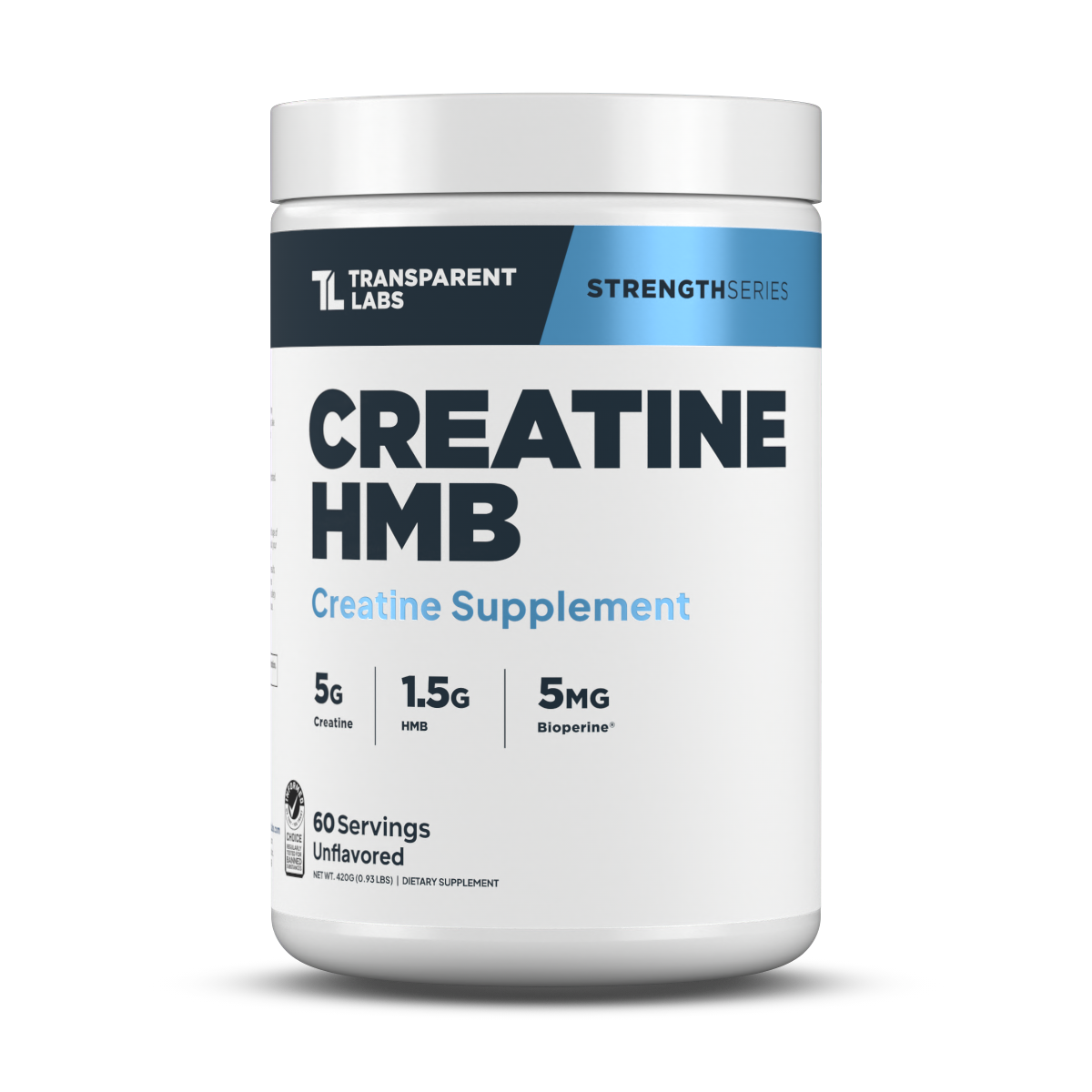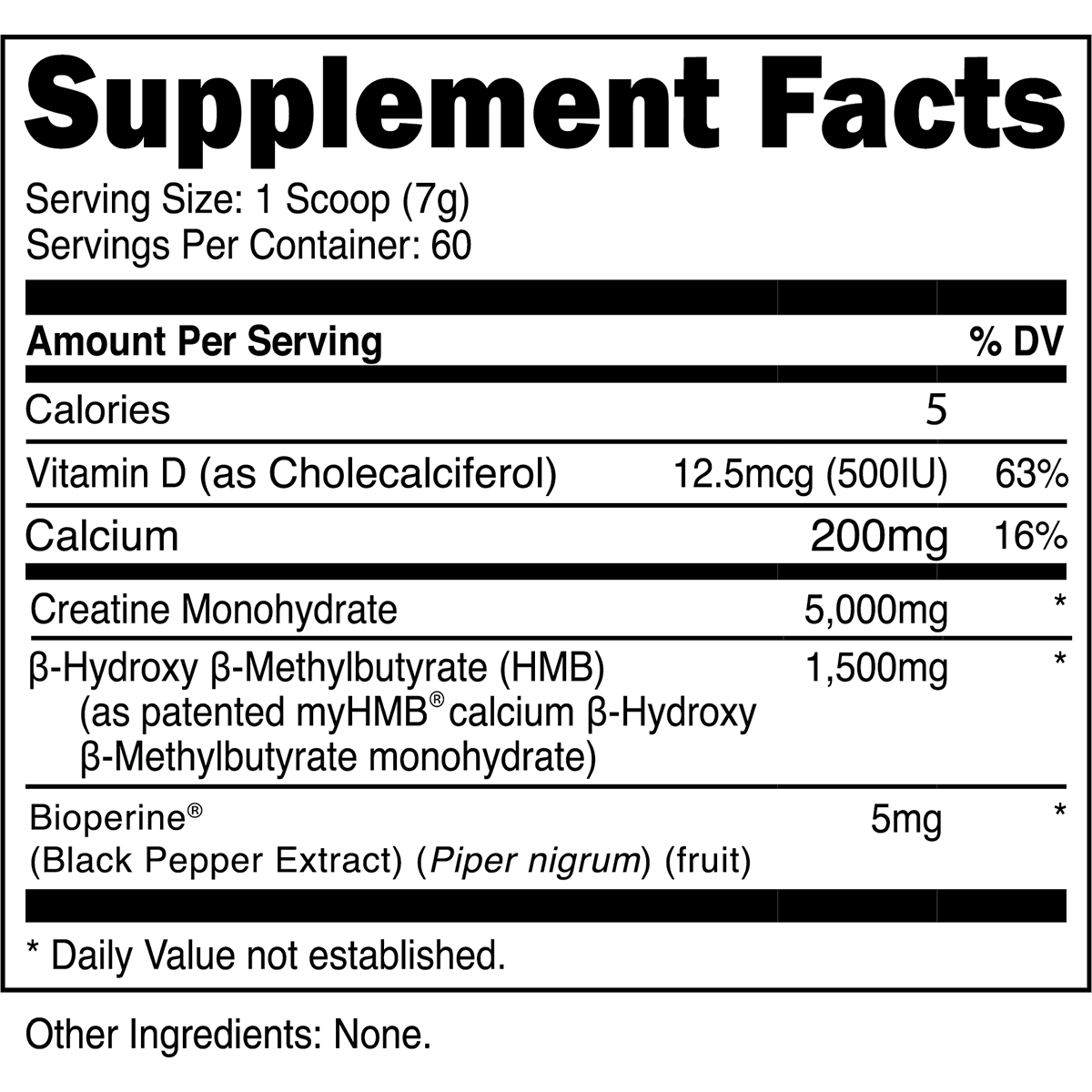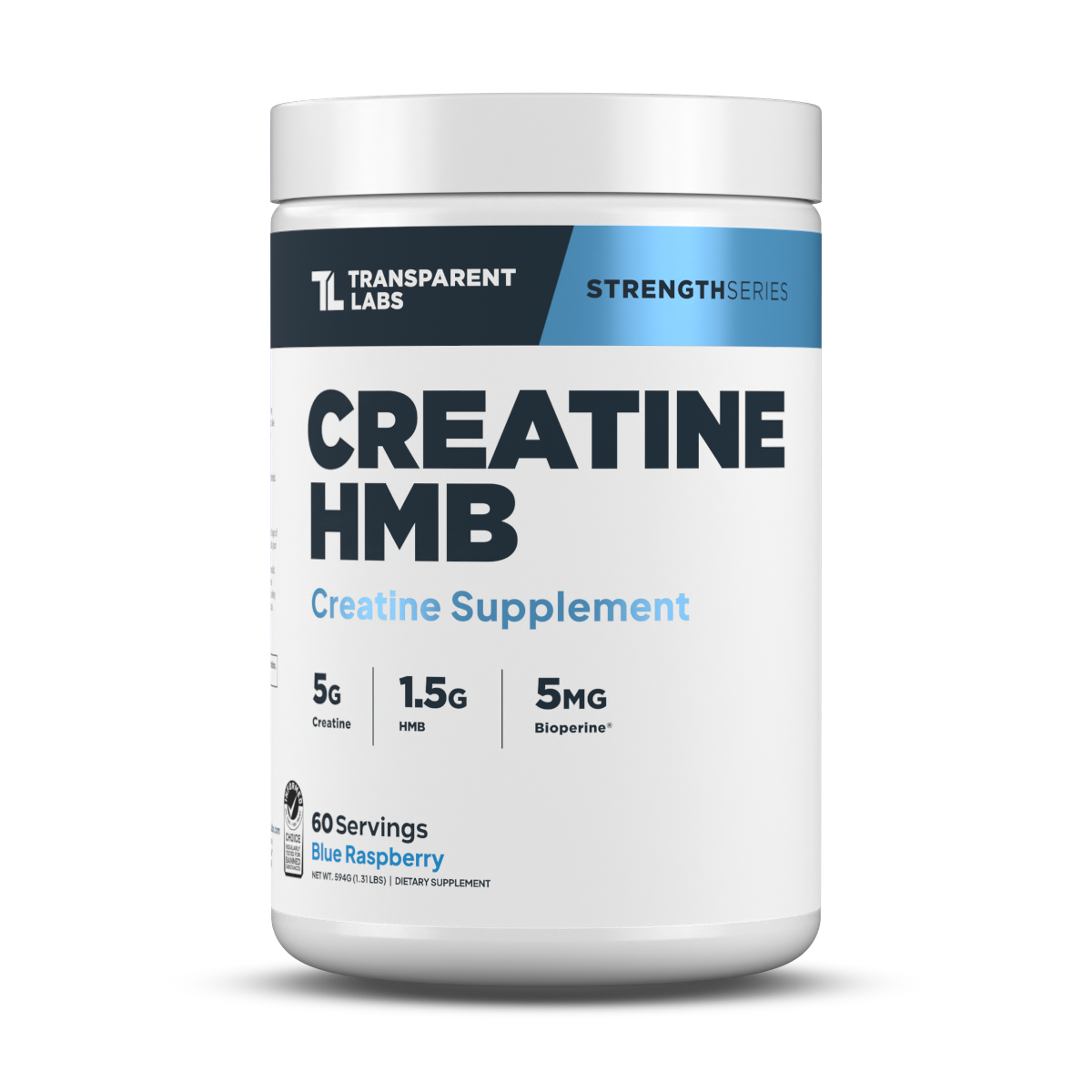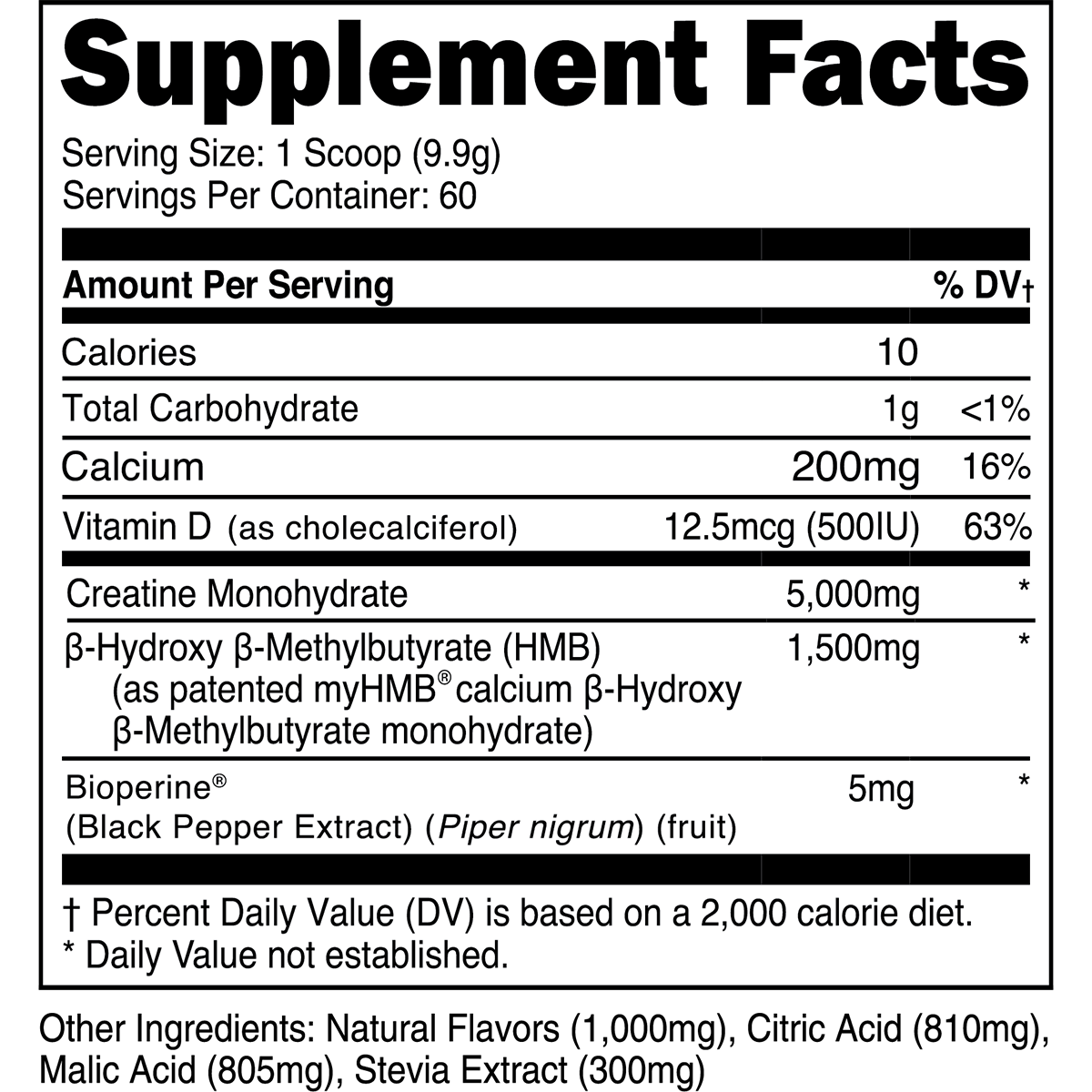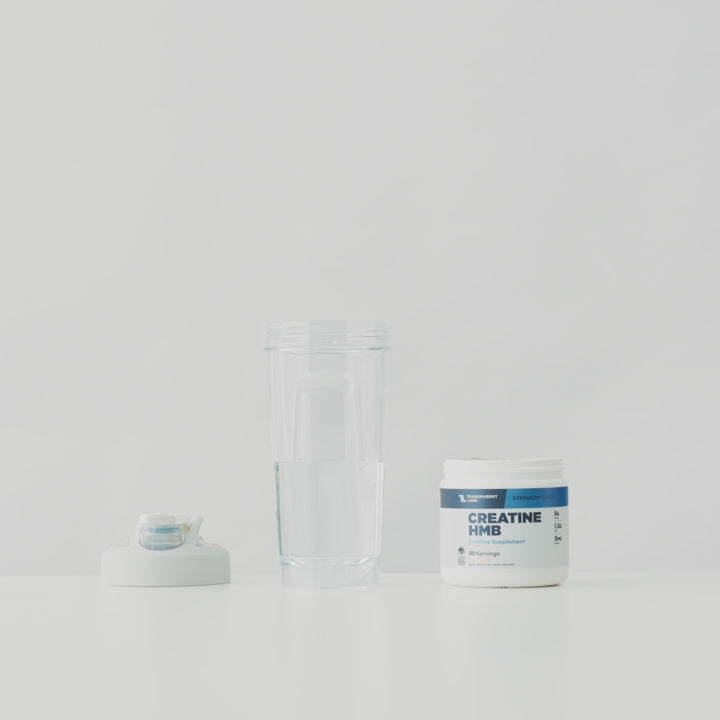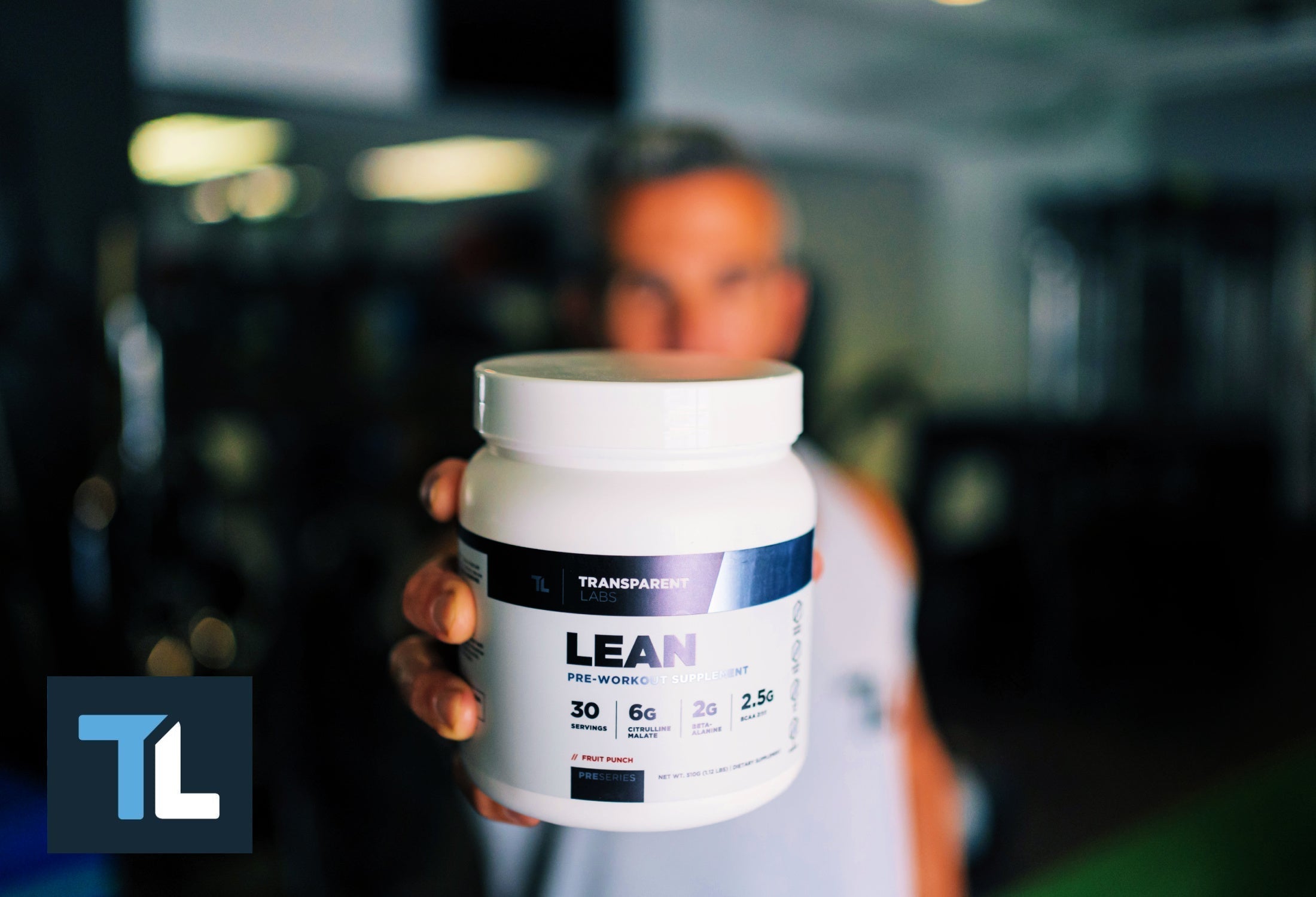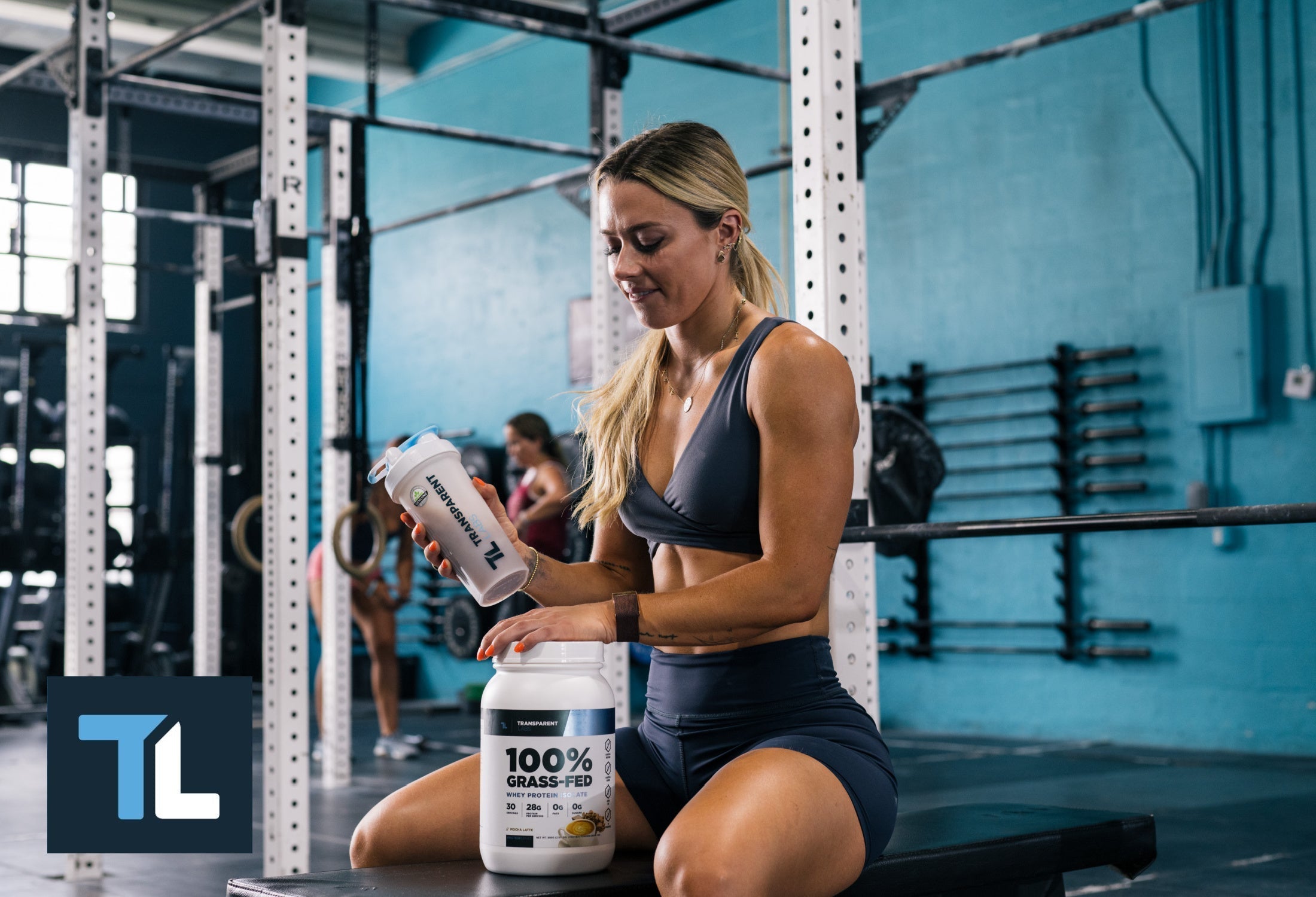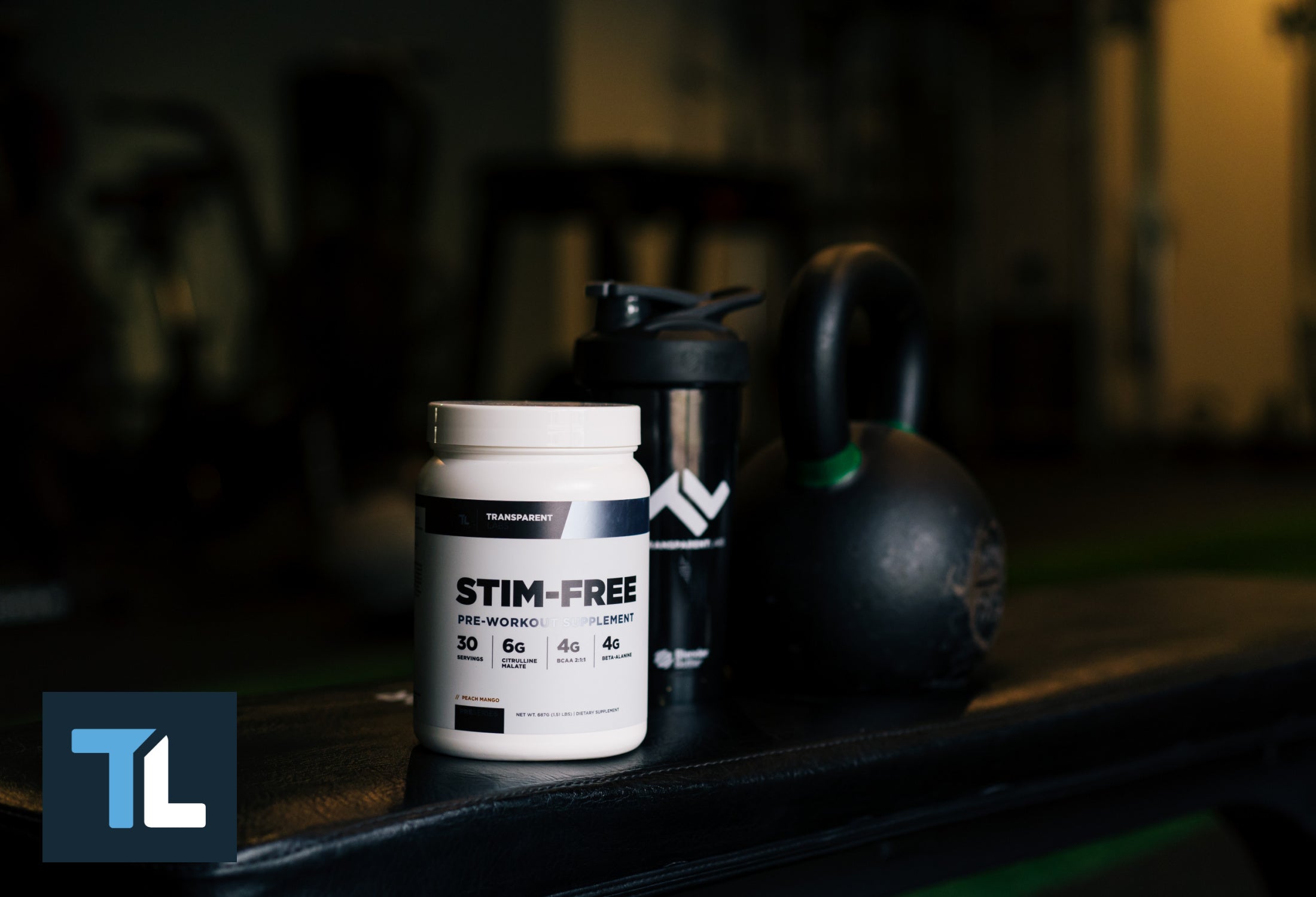With at-home workouts becoming more popular and practical, you might wonder how to build muscles without weights. Well, we've got your back—or, in this case, your entire body.
Most people figure weightlifting is the only way to bulk up and pack on lean body mass, but you don’t need heavy barbell bench presses and squats just to build a bigger chest and muscular legs. In fact, lifting weights isn’t a necessity for building muscles. You can build plenty of muscle through other types of training (and proper nutrition, of course).
This article will explain how muscle growth works and how to build muscle using bodyweight exercises. We'll also provide an example exercise routine and recommend three nutritional supplements to help propel muscle gains.
How Do Muscles Grow?
Muscle growth, or “skeletal muscle hypertrophy” in scientific terms, occurs when protein synthesis is greater than protein breakdown in muscle tissues. This translates to a net positive protein turnover, leading to increased muscle mass.
The exact mechanisms of muscle growth are quite involved, but here's a quick overview of three requisites for stimulating hypertrophy through exercise [1]:
1. Mechanical Tension
Mechanical tension is imperative for muscle growth. When you're performing a bodyweight exercise, like a squat, your muscles lengthen in the eccentric phase (e.g., the downward movement of the squat), which produces passive mechanical tension.
When paired with the active tension in the concentric phase of the same exercise (e.g., the upward movement of the squat), the overall mechanical tension contributes to a greater muscle-building effect.
Weight training and bodyweight exercises can both build muscle tissue effectively as long as sufficient mechanical tension occurs. Hence, free weights are not a requirement for muscle growth.
2. Muscle Damage
Another key factor in building muscles is causing microscopic tears (“microtears”) in the tissues of your body muscles, releasing more growth factors for damage repair.
The area at the neuromuscular junction (where the neuron intersects with the muscle fiber to create muscular contractions) is rich in satellite cells, which are stem cells of skeletal muscle. Since satellite cells regulate muscle growth and repair, any damage that occurs at the neuromuscular junction will invariably activate satellite cells and promote muscle growth.
3. Metabolic Stress
In high-intensity exercises like plyometrics, fast-twitch muscle fibers use anaerobic metabolism to create quick, explosive moves. One benefit of anaerobic respiration is it gives rise to high levels of metabolic stress and lactate accumulation to stimulate muscle-building.
While anaerobic training is emphasized here, it's also prudent to incorporate aerobic exercises into your workout routine to reap the synergistic benefits of concurrent training.

For instance, high-intensity interval training (HIIT) leverages short bursts of intense cardio to push your heart rate to at least 80-90% of its maximum capacity in brief intervals. With these intense adaptations, aerobic exercises essentially become anaerobic to help you build muscles more efficiently.
Can You Build Muscle Without Weights?
While lifting weights is highly effective for building muscle, it's certainly not the only way. Using your body weight as a source of “resistance” is a great substitute for free weights like a barbell or dumbbell. As discussed earlier, bodyweight exercises, like weight training, can induce all three muscle-building mechanisms: mechanical tension, muscle damage, and metabolic stress.
Several studies have shown that low-load, high-volume resistance training (e.g., high-rep bodyweight exercises) can be as effective for muscle-building as high-load, low-volume resistance training (e.g., heavy weightlifting) [2]. However, muscle-building through bodyweight training isn't as simple as performing the exercises. It's also about progressive overload: Gradually increasing the intensity and difficulty of each bodyweight exercise to exert greater demands on your muscles over time.
This prevents your muscle groups from becoming too comfortable with the status quo, so to speak. By repeatedly challenging your muscles to do more work, you give them the necessary stimulus to continue growing.
6 Tips for Using Your Own Body Weight to Build Muscle
To get the most out of your bodyweight workouts for increased muscle mass, we've put together a list of tips:
1. Increase Your Training Volume
Increasing your training volume is an effective way to progressively overload your muscle groups [3]. You can do this by performing more bodyweight exercises in one session and/or increasing workout frequency. However, it's best to increase your training frequency at a moderate pace to prevent overtraining. If you currently train 3 to 4 times per week, try adding an extra workout for a few weeks and see how your body responds.
2. Don't Rush the Eccentric Phase of Muscular Contraction
Slowing down is highly recommended for the eccentric phase of an exercise. Research suggests eccentric contractions are linked to a faster rise in protein synthesis than concentric movements during resistance training [4].
Try to use a controlled tempo with each repetition that emphasizes the eccentric contraction for 1-2 seconds. For example, when doing pull-ups, try to perform the concentric phase in an explosive fashion, then pause at the top before slowly lowering your body back to the starting position.
3. Try Different Variations
It's normal for your body to get used to the exercises over time. Maybe the bodyweight squat no longer feels as challenging as before, and pull-ups are just routine movements now.
This is the perfect time to introduce different variations of the same exercises. The increased difficulty of your workout will act as a form of progressive overload, so you continue to challenge your muscle groups. It will also increase mechanical tension and microtrauma in the tissue of your body muscles to stimulate further growth.
To add different variations to your workout routine, you can:
-
Change the exercise angle: Doing the same exercise from a different angle is a great way to target underdeveloped muscle groups for a balanced physique and improved strength. For instance, decline push-ups can emphasize the triceps and lower pectoralis major than standard push-ups.
-
Include single-side exercises: To really engage your muscles, single-side exercises are the way to go. The pistol squat (placing all your weight on one leg) is a popular alternative to the bodyweight squat. Or, skip the regular push-up and challenge yourself to a one-arm push-up.
4. Use Bodyweight Exercises Strategically
If you want to add muscle mass to your upper body, grouping body-weight exercises together in the same session to achieve progressive overload of the chest, arms, and back muscles is prudent. You can also superset exercises that target antagonistic muscle groups to increase the pace of your workouts. For example, try pairing push-ups with pull-ups or chin-ups to target your upper body muscle groups.

Likewise, you could do supersets of bodyweight squats and timed planks or lunges and leg raises in succession to target your lower body and core.
5. Make Your Exercises Plyometric
Plyometrics are some of the best bodyweight exercises for building muscle mass. You can easily turn regular exercises into plyometric ones. For instance:
-
Transition from a squat to a squat jump: Lower into the bodyweight squat position, then push your feet off the ground in an upward, explosive movement. Land in the same pose as your starting position.
-
Change from a lunge to a lunge jump: Lower into the standard lunge position with your left foot in front. Jump up and switch your legs so you land softly with your right foot in front.
Or, include a few sets of plyometric exercises to get your heart rate pumping. Some examples include jumping jacks, high-knees, and burpees.
6. Pick Up the Pace During Your Workouts
Taking shorter breaks between sets creates greater metabolic stress, which is conducive to muscle growth and mitochondrial integrity [5]. When performing bodyweight exercises, shorter rest intervals (e.g. 45 to 60 seconds between sets) should give your muscles enough time to recover without hampering performance on ensuing sets/exercises that target the same muscle group.
Example Exercise Routine to Build Muscle without Weights
Below is a workout routine that leverages your own body weight to help you build strength and muscle.
Consistency and proper form are key. Perform each exercise with control and aim for 3 sets of 10-15 reps, unless specified otherwise.
| Exercise | Muscles/Areas Worked | Reps/Sets |
|---|---|---|
| Push-Ups | Chest, shoulders, triceps, and core. | 3 sets of 10-15 reps |
| Squats | Quads, hamstrings, glutes, and core. | 3 sets of 15-20 reps |
| Pull-Ups/Chin-Ups | Upper back, shoulders, and biceps. | 3 sets of max reps |
| Plank | Core, shoulders, and glutes. | 3 sets of 30-60 seconds |
| Glute Bridges | Glutes and hamstrings. | 3 sets of 15-20 reps |
| Dips | Triceps, chest, and shoulders. | 3 sets of 10-15 reps |
| Lunges | Quads, hamstrings, and glutes. | 3 sets of 15 reps per leg |
3 Evidence-Based Supplements to Enhance Muscle Growth
While you should get most, if not all, of your recommended daily intake of nutrients through whole foods, adding the right supplement(s) to your regimen can further promote muscle growth and recovery between workouts. Here are three foundational supplements with established scientific track records to consider:
1. Whey Protein Powder
Whey protein is the cornerstone of any muscle-building regimen — it's easily digestible for faster absorption and provides all the necessary amino acids for protein synthesis in your muscles. If you're unfamiliar with whey, it is a byproduct of the cheesemaking process. Much like a cow's diet affects the quality of their meat, it also affects the quality of their milk. Since whey protein is derived from cheese, and cheese is made from milk...well, hopefully, you can put two and two together to see where this is going.

The added nutritional benefits of grass feeding are "passed on" via meat and dairy, the latter of which is used for making protein powders. So, Transparent Labs 100% Grass-Fed Whey Isolate is sourced from pure grass-fed American dairy cattle raised without the use of growth factors or hormones. We are proud to offer the most premium whey protein in the world, with absolutely no artificial sweeteners, fillers, food dyes, gluten, or preservatives, and certified by Labdoor with a score of 98 out of 100.
Note: If you're looking for a plant-based protein powder, opt for pea protein and/or rice protein, both of which can be found in Transparent Labs Organ Vegan Protein Powder.
2. Creatine Monohydrate
Creatine is a naturally occurring substance present in your body muscles. Creatine monohydrate, in particular, is arguably the most thoroughly studied sports supplement on the market.
Several meta-analyses support using creatine monohydrate in conjunction with resistance training to enhance body composition and athletic performance [6, 7].To reap these benefits, consider using a creatine supplement after your resistance training workouts. Transparent Labs Creatine HMB is made with 5 grams of pure creatine monohydrate plus synergistic myHMB™, vitamin D3, and BioPerine® for supporting muscle mass, strength, and endurance.
3. Pre-Workout Powder
Pre-workout supplements are exceedingly popular these days, but perhaps the biggest mistake supplement companies make is overloading their pre-workouts with caffeine and harsh stimulants. In the long run, these formulas are not sensible due to the rapid induction of tolerance; it's a slippery slope when you rely on large doses of caffeine just to get through a workout.
Make no mistake: caffeine is a highly effective ingredient when used appropriately. As such, Transparent Labs BULK Pre-Workout is formulated with an ample (but not excessive) 200 mg of PurCaf® organic caffeine and clinical doses of evidence-based ingredients, such as L-citrulline malate, BetaPure™ betaine anhydrous, beta-alanine, taurine, and alpha-GPC. This pre-workout is a great choice for building muscle on any workout routine.
Strength Training Comes in Many Forms
Weight training is one of several resistance-training modalities that can build muscle, but you certainly don't need heavy weights to develop a muscular physique. Incorporating bodyweight exercises into your fitness routine is arguably just as effective as lifting weights, and, in many cases, the former is more practical and safer.
Bodyweight exercises can also target the upper and lower body muscle groups in a functional pattern that carries over to your everyday life.

